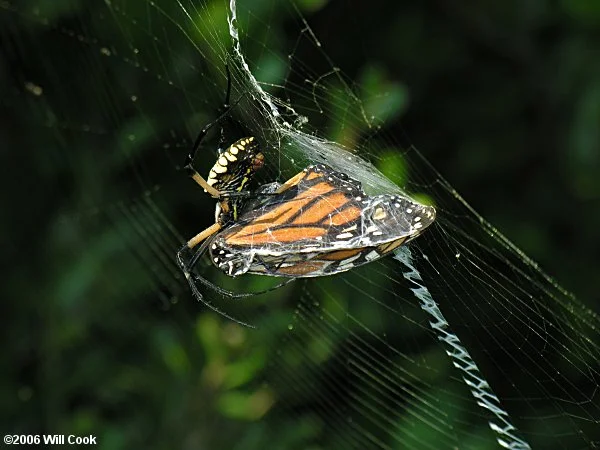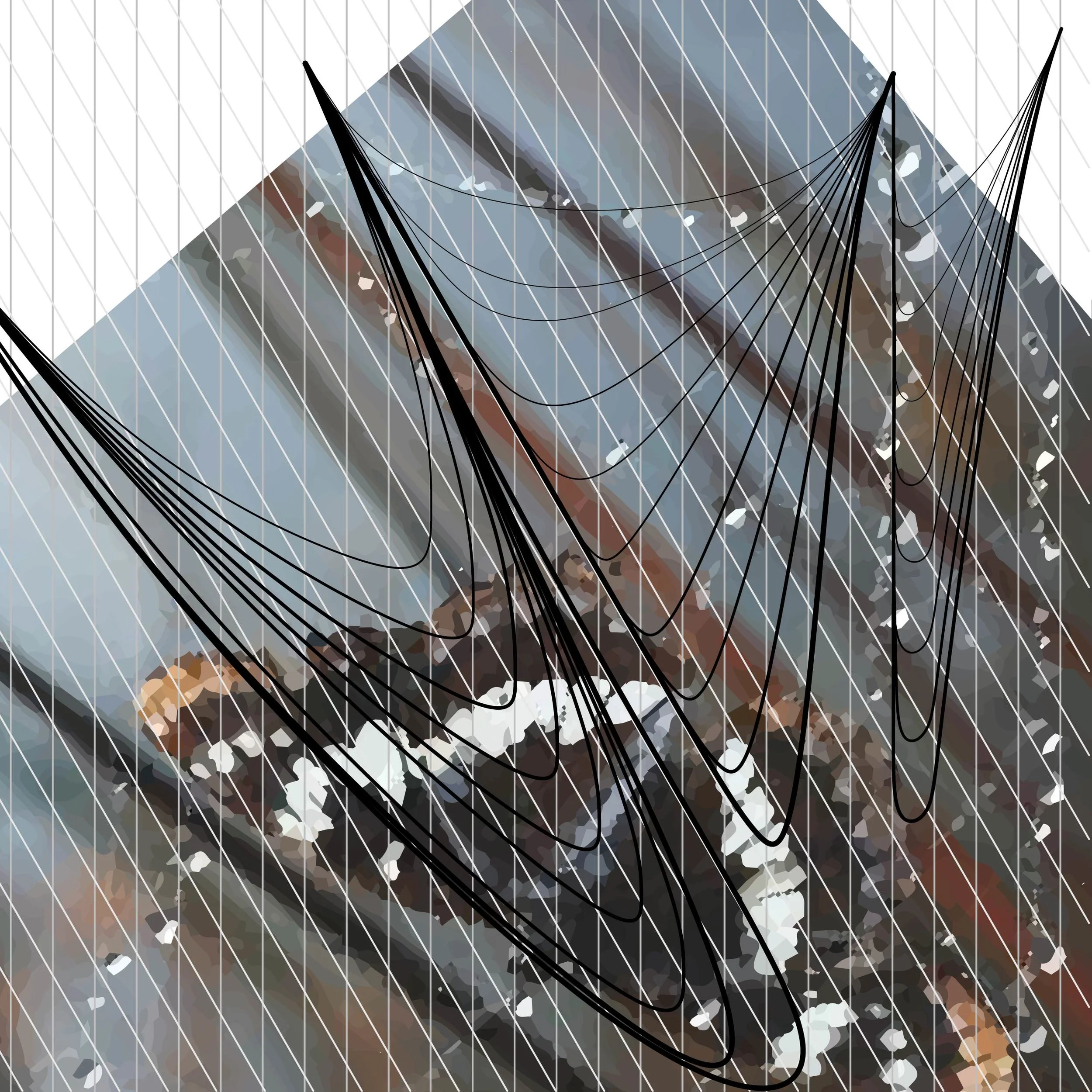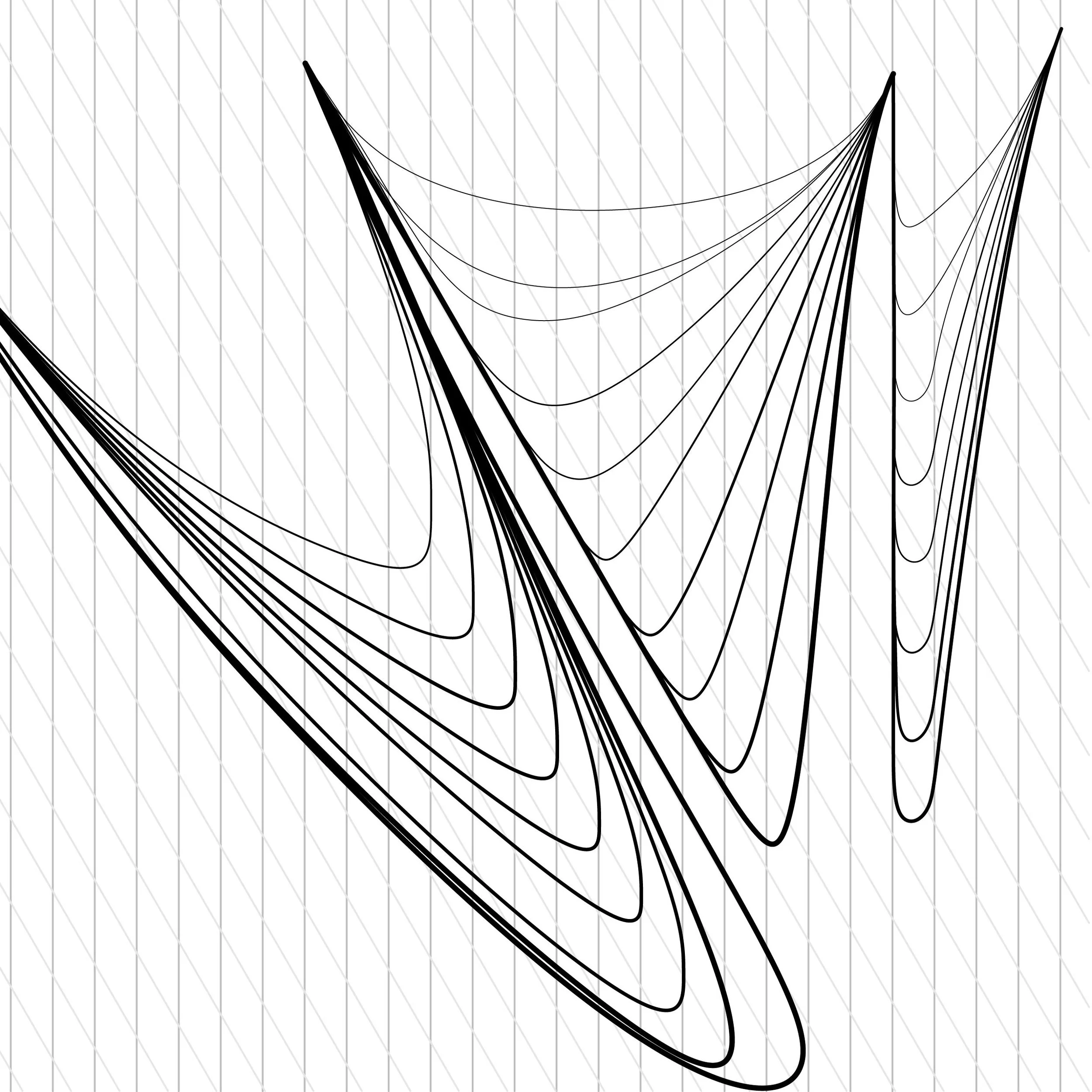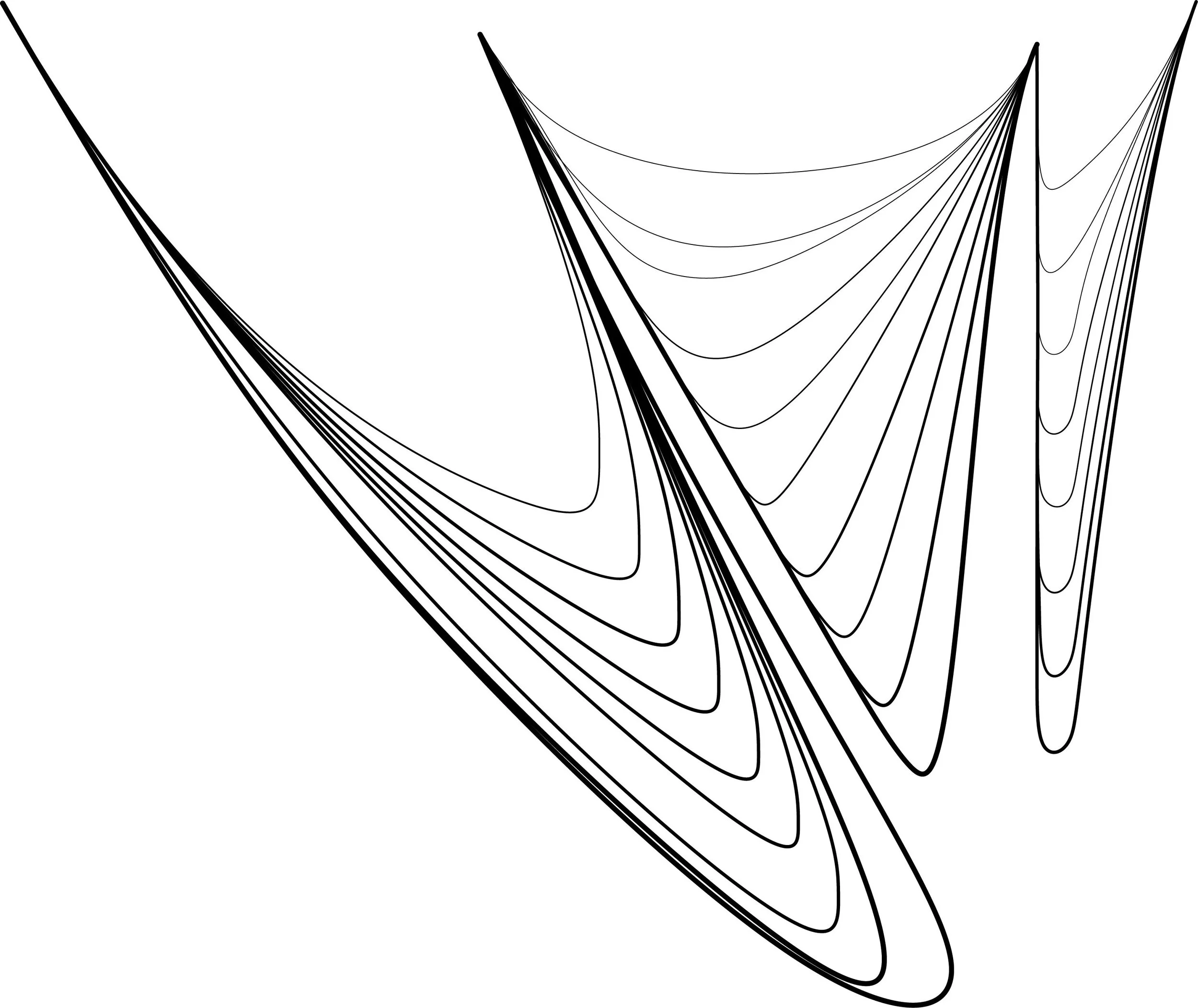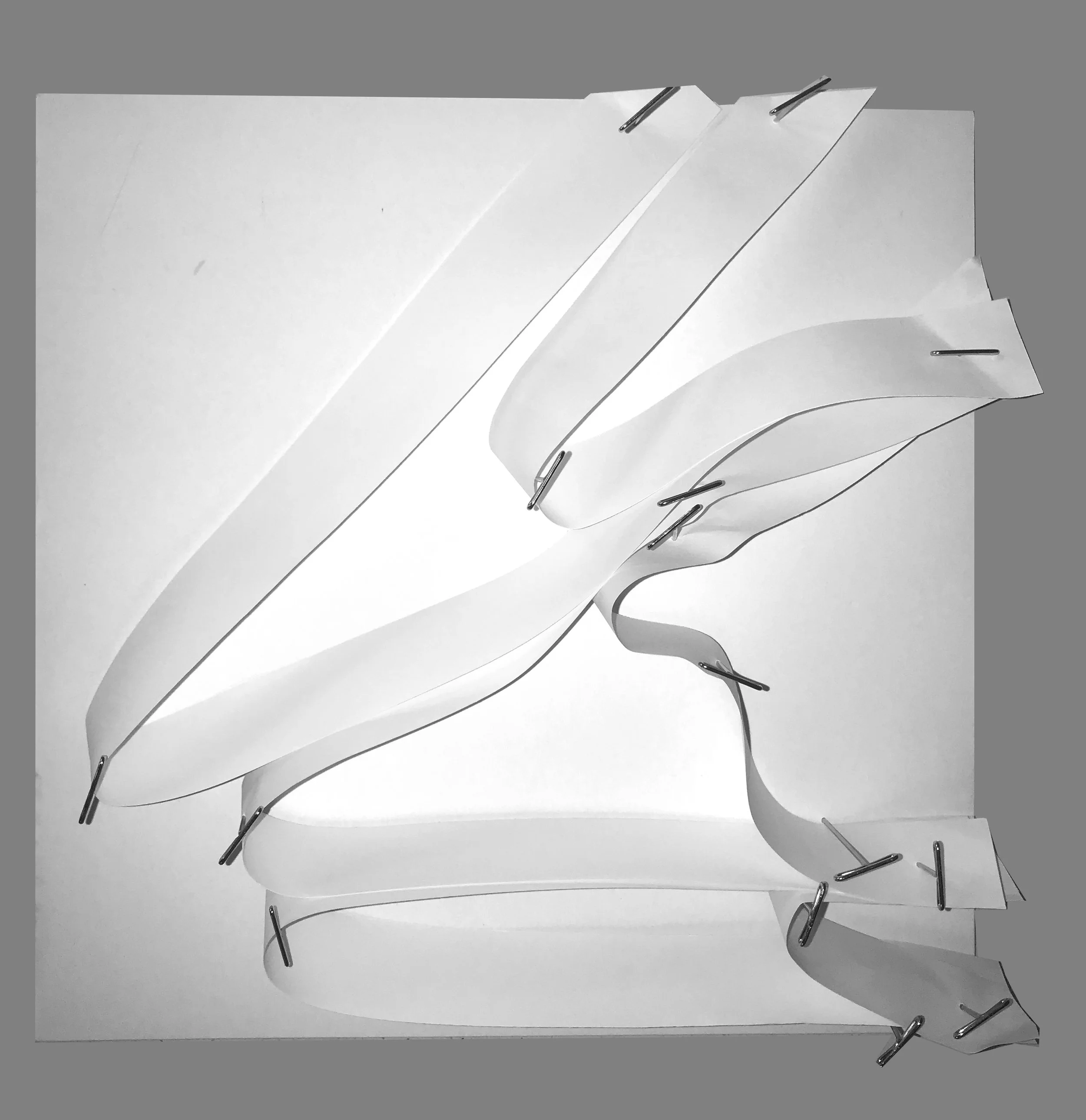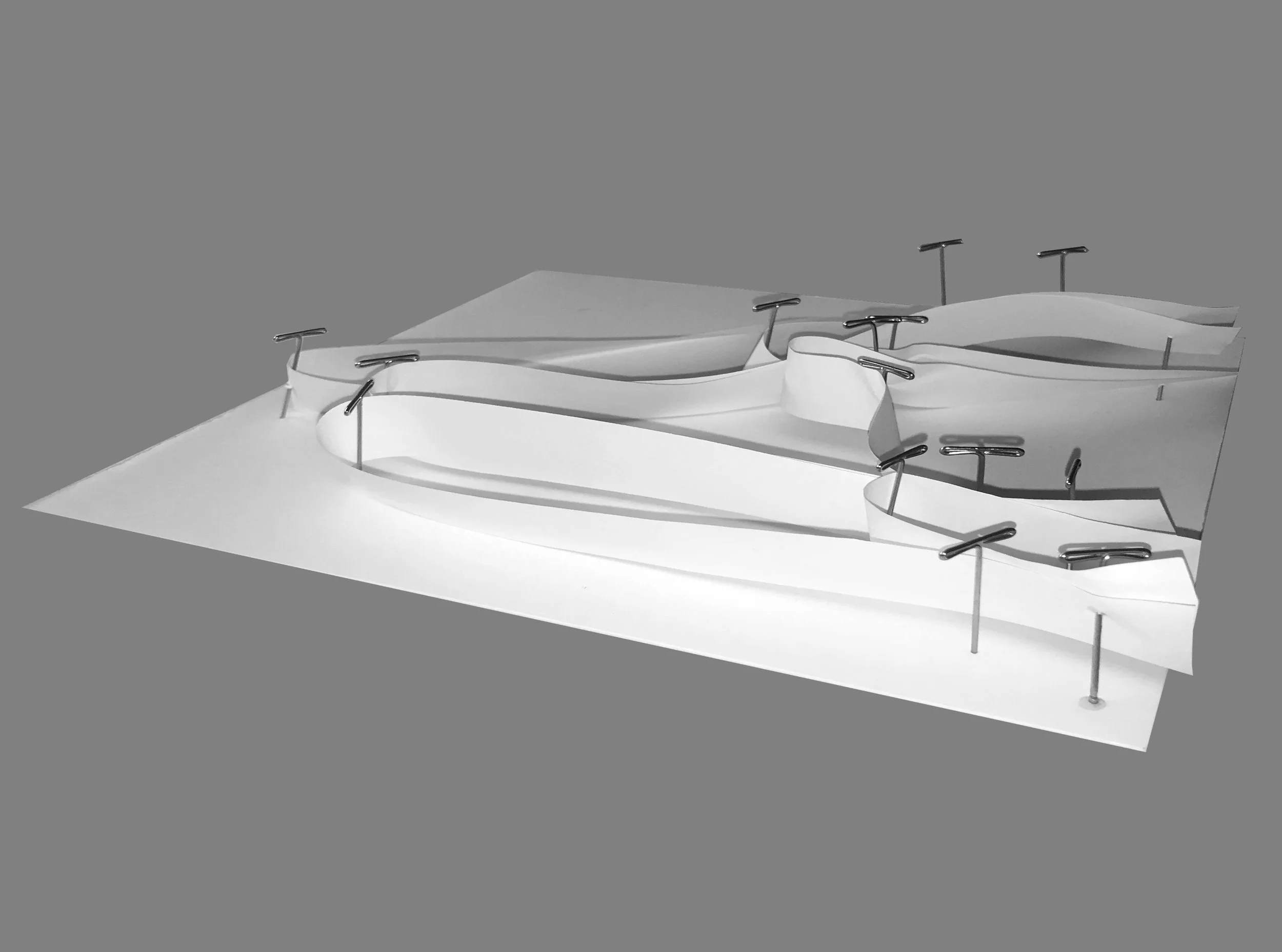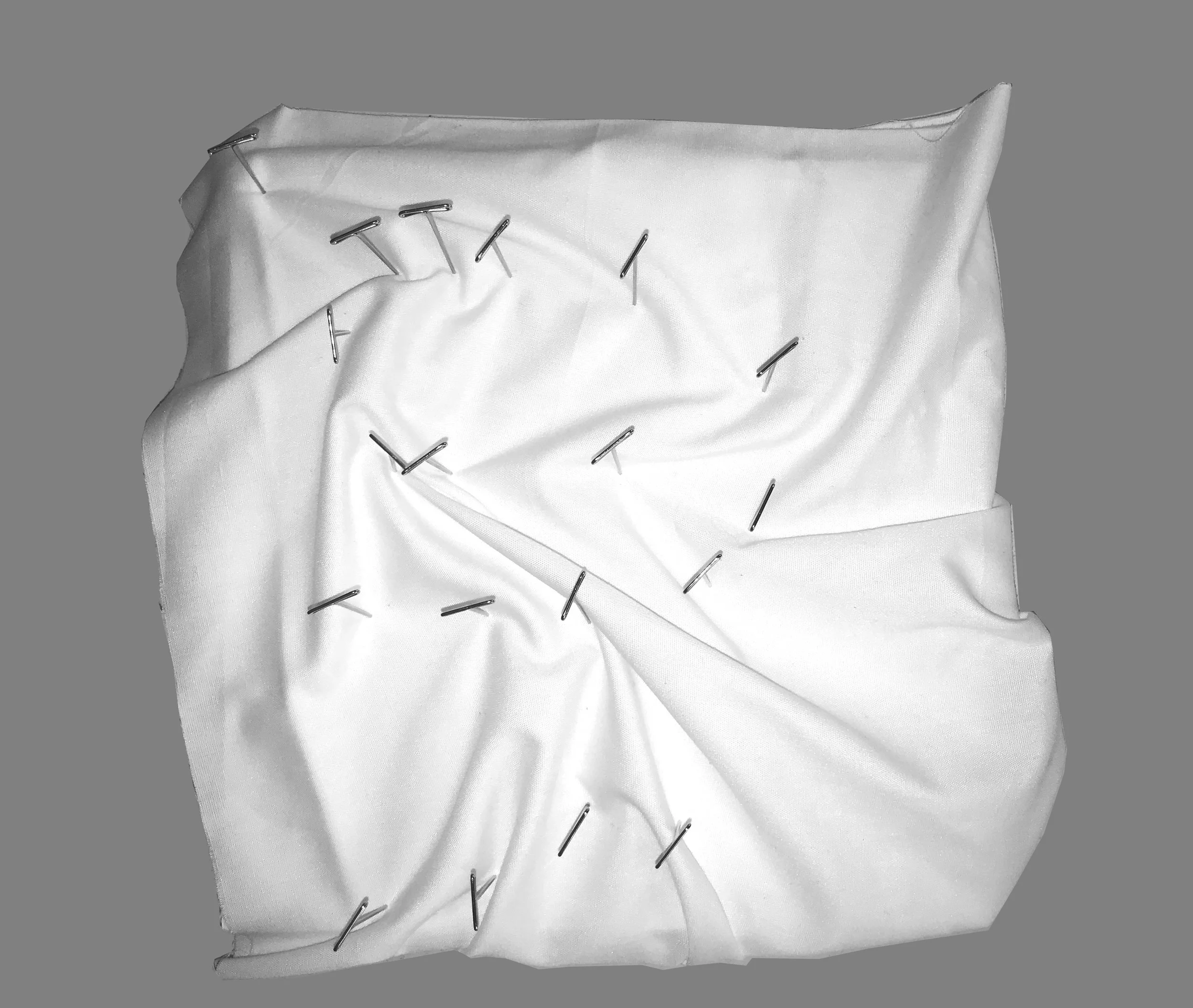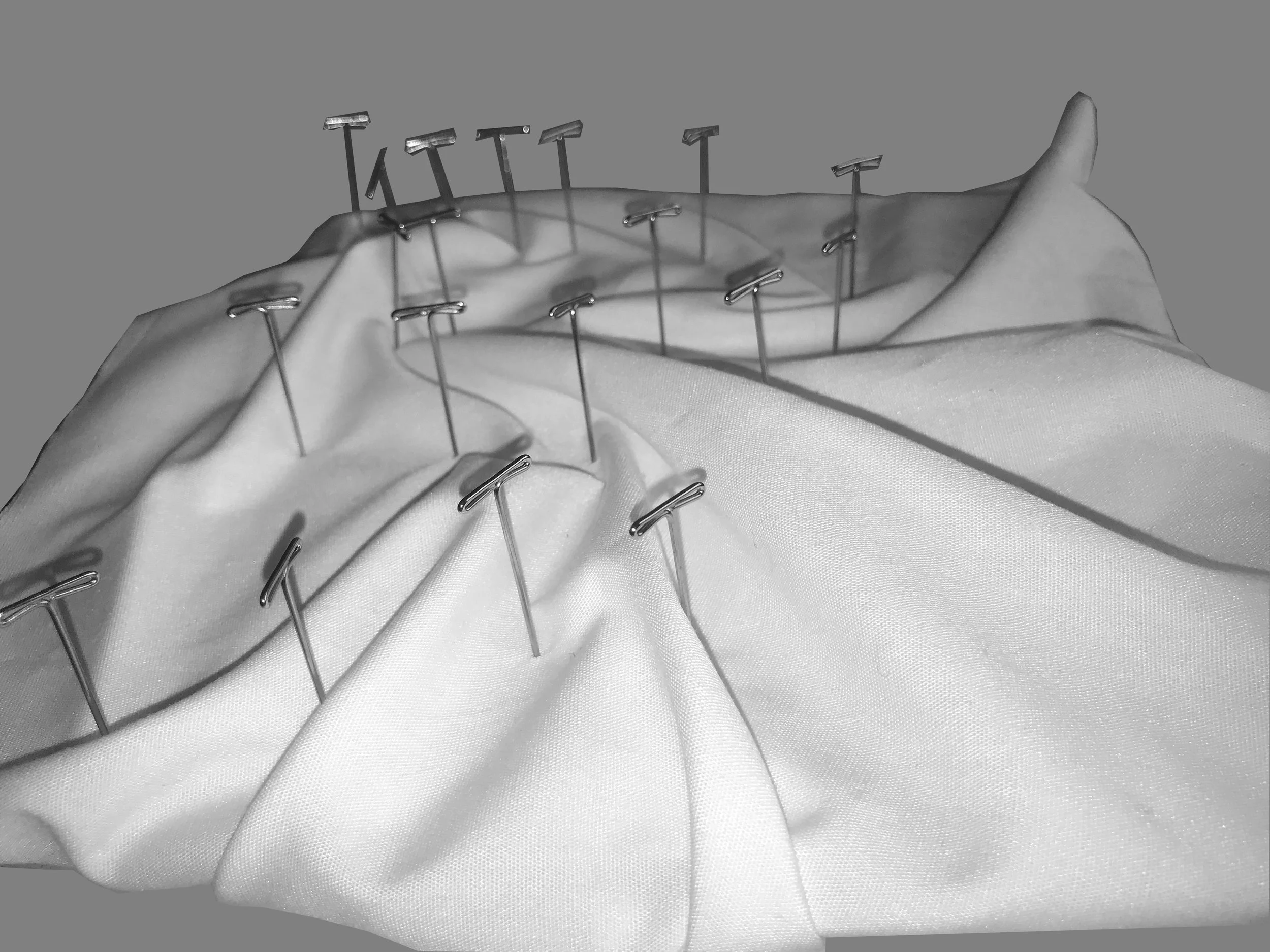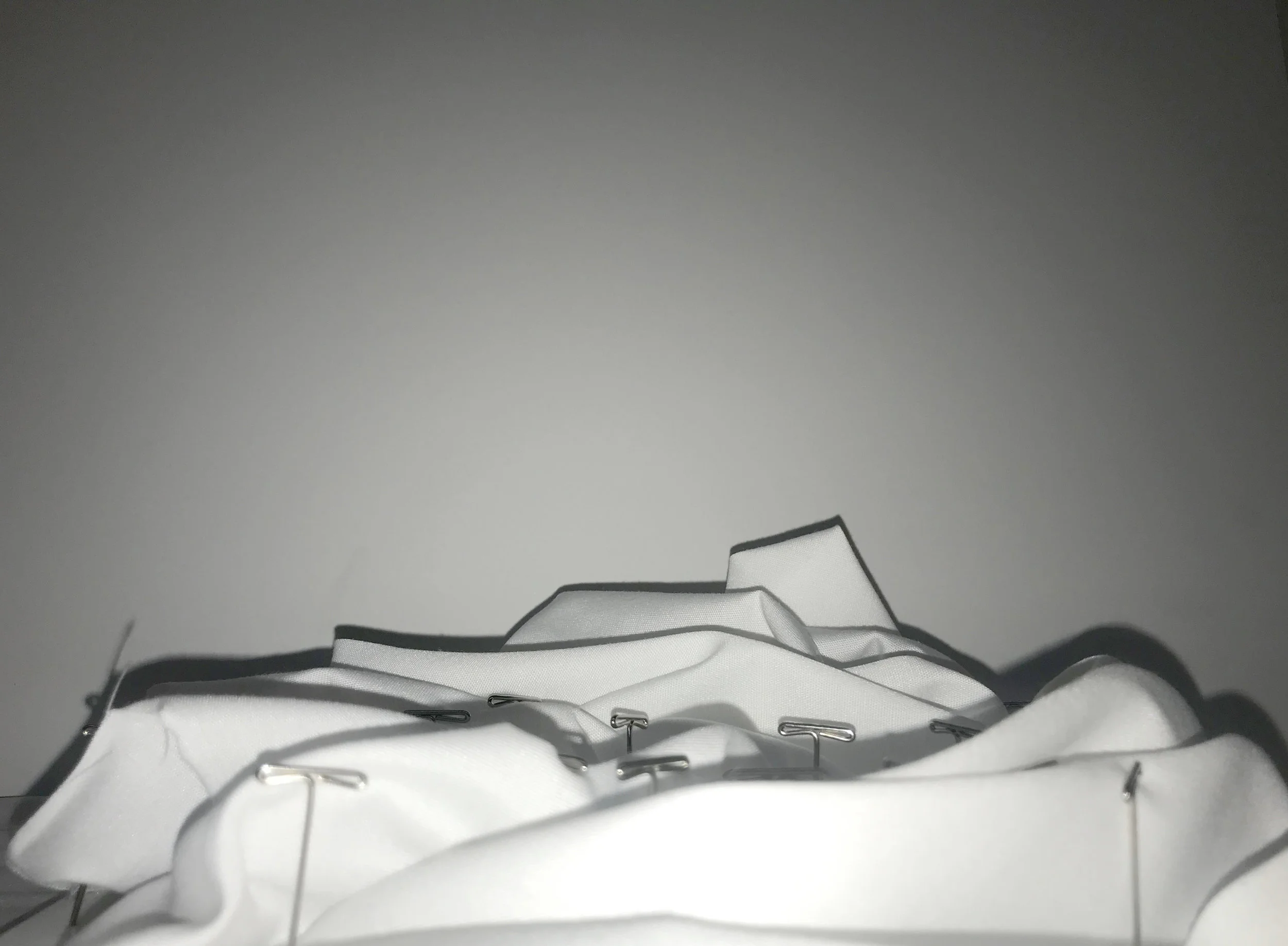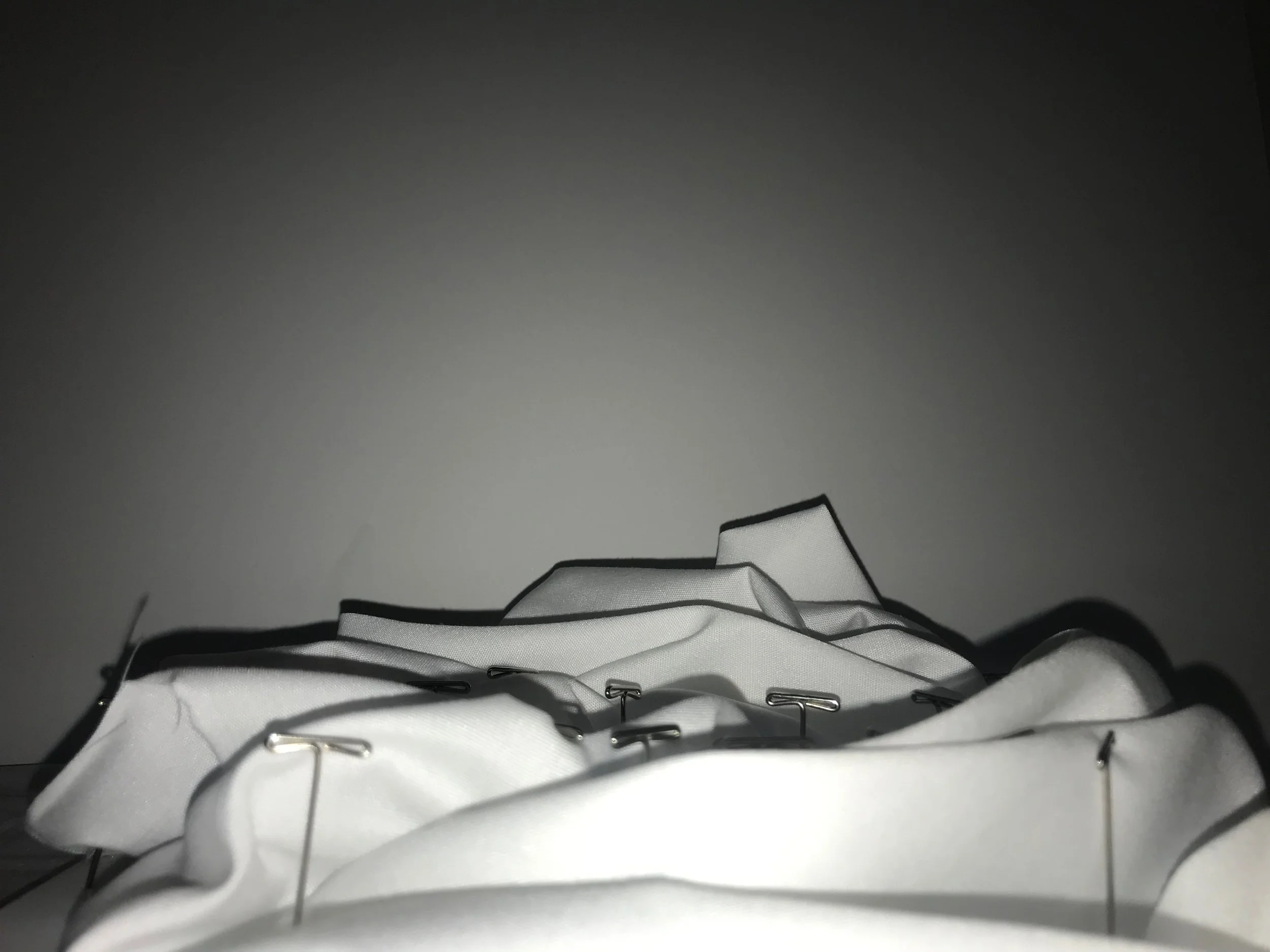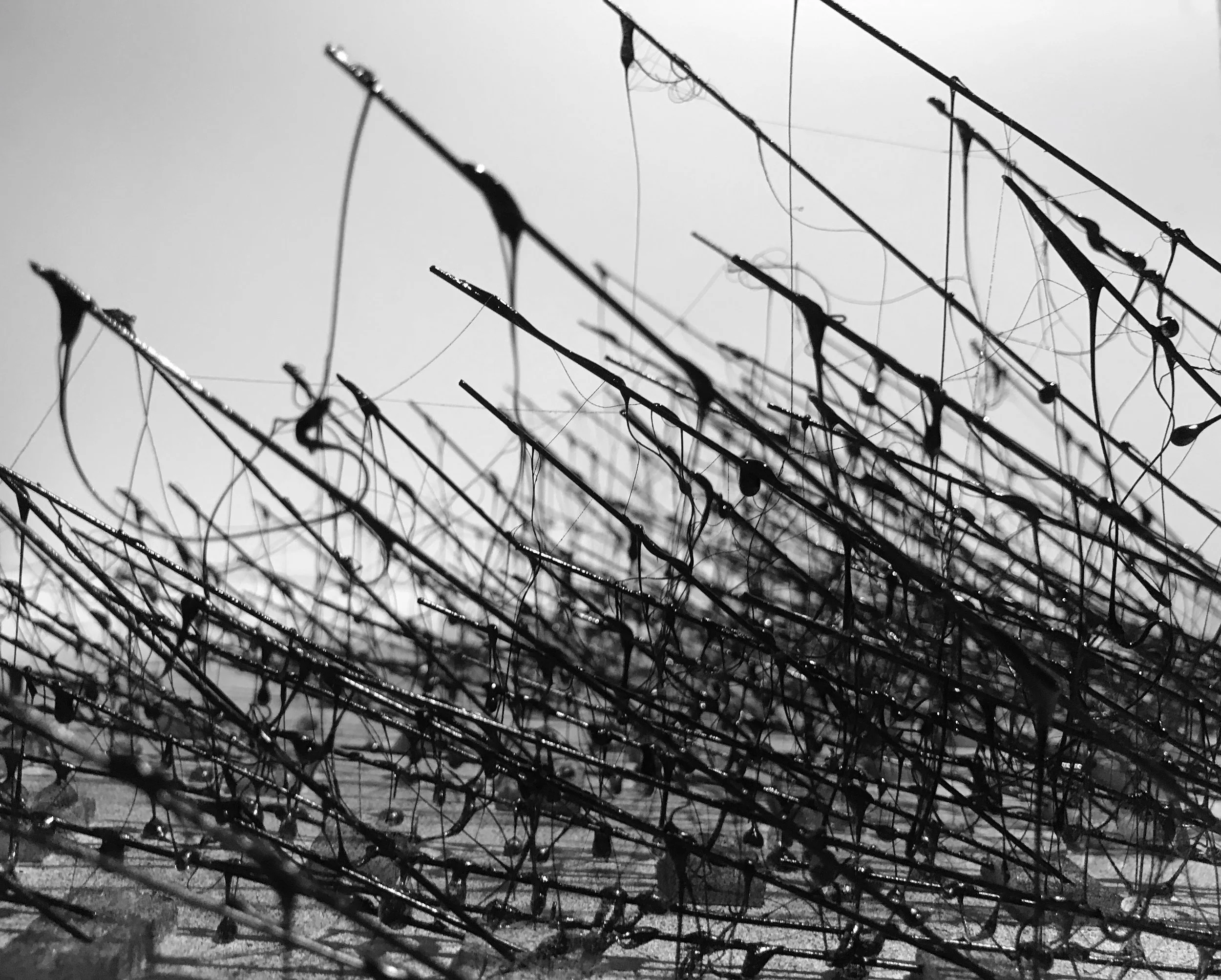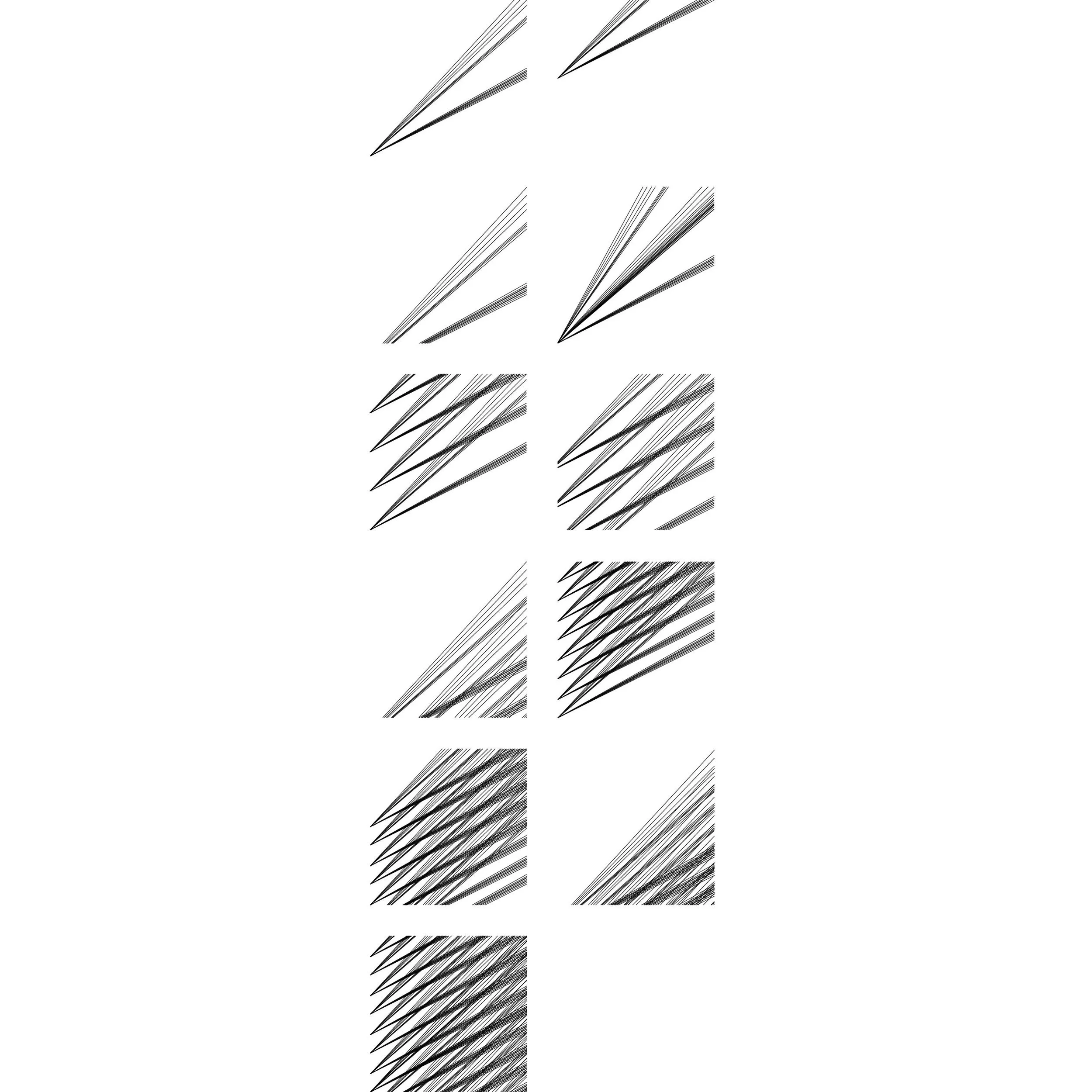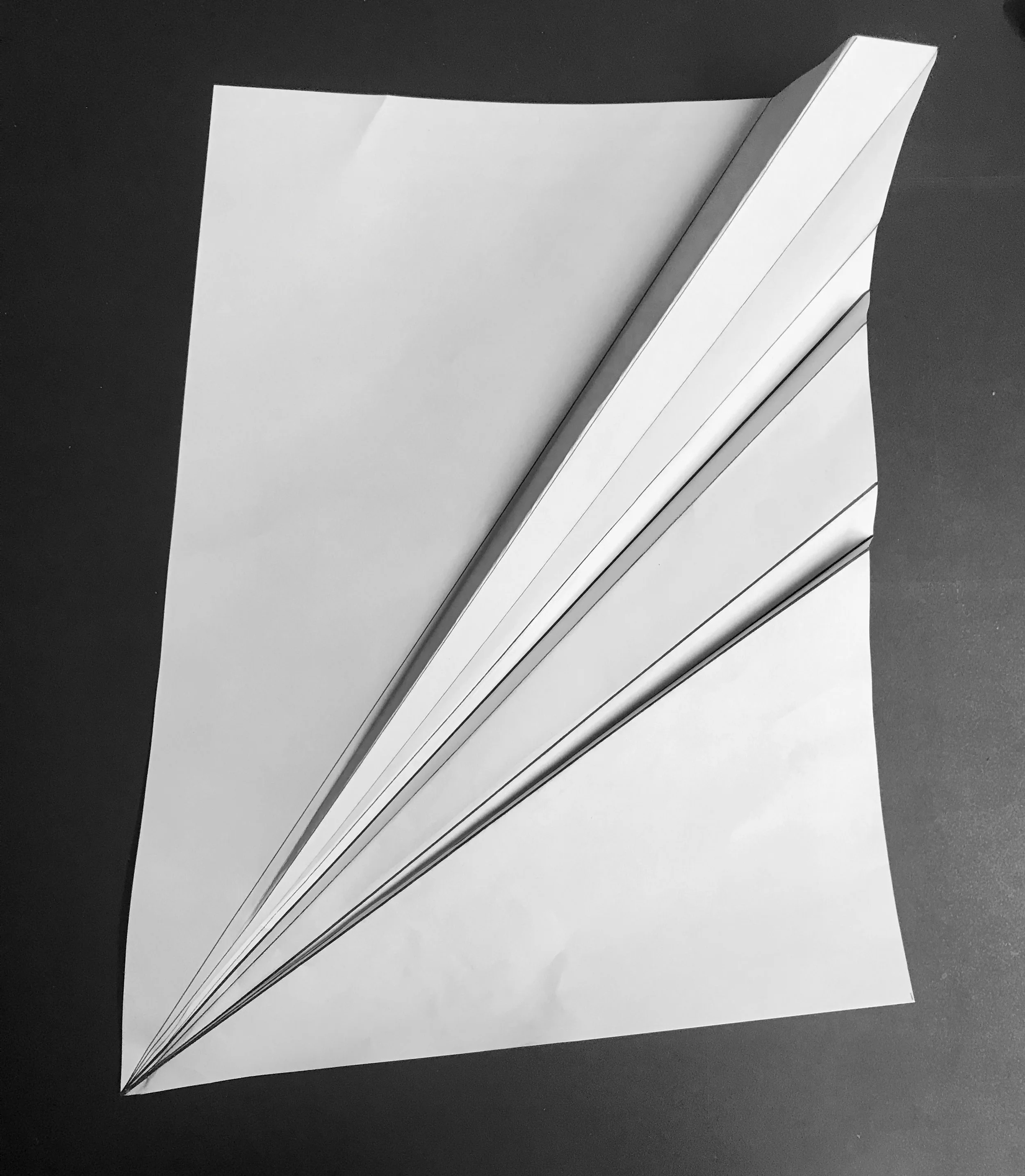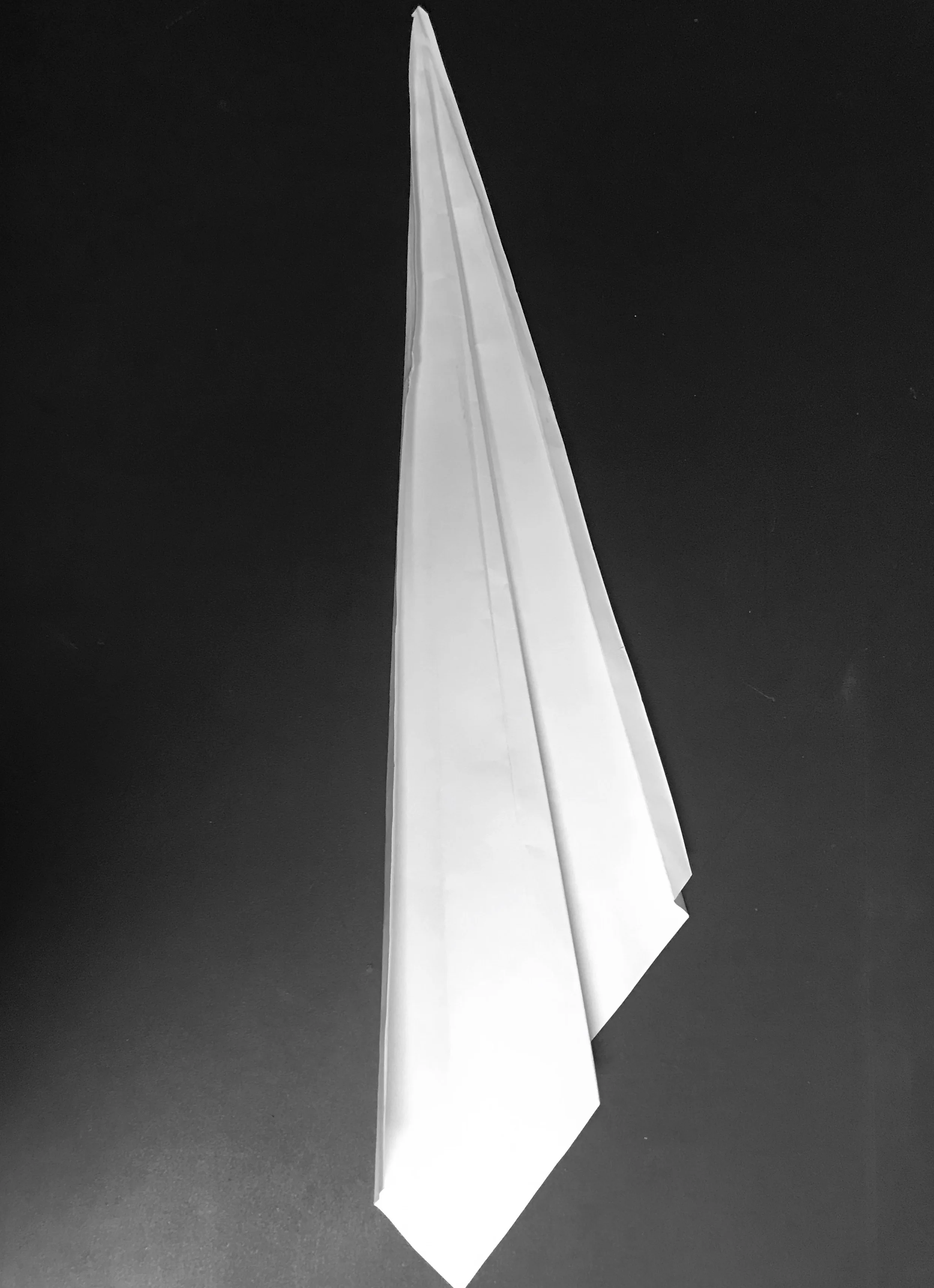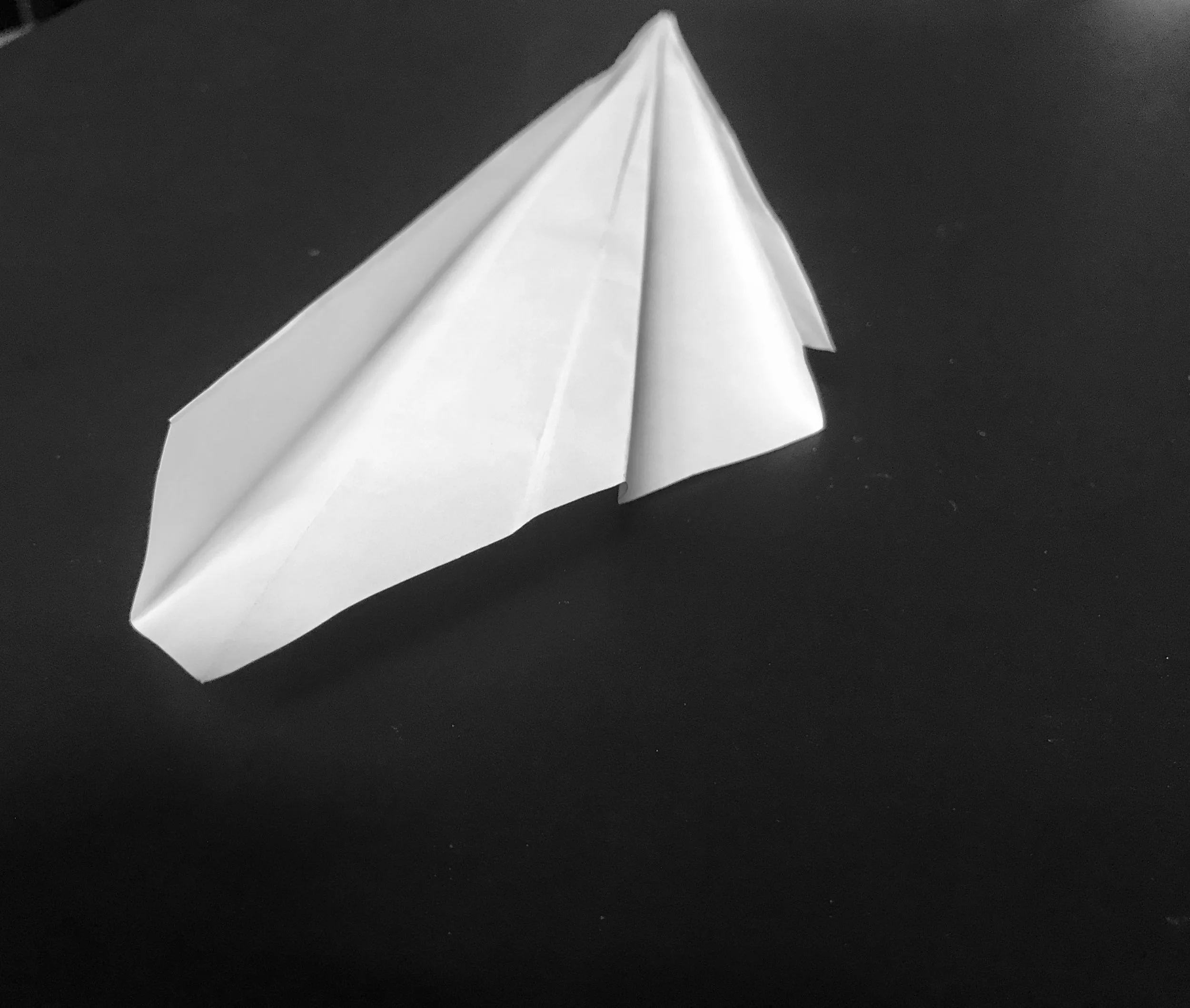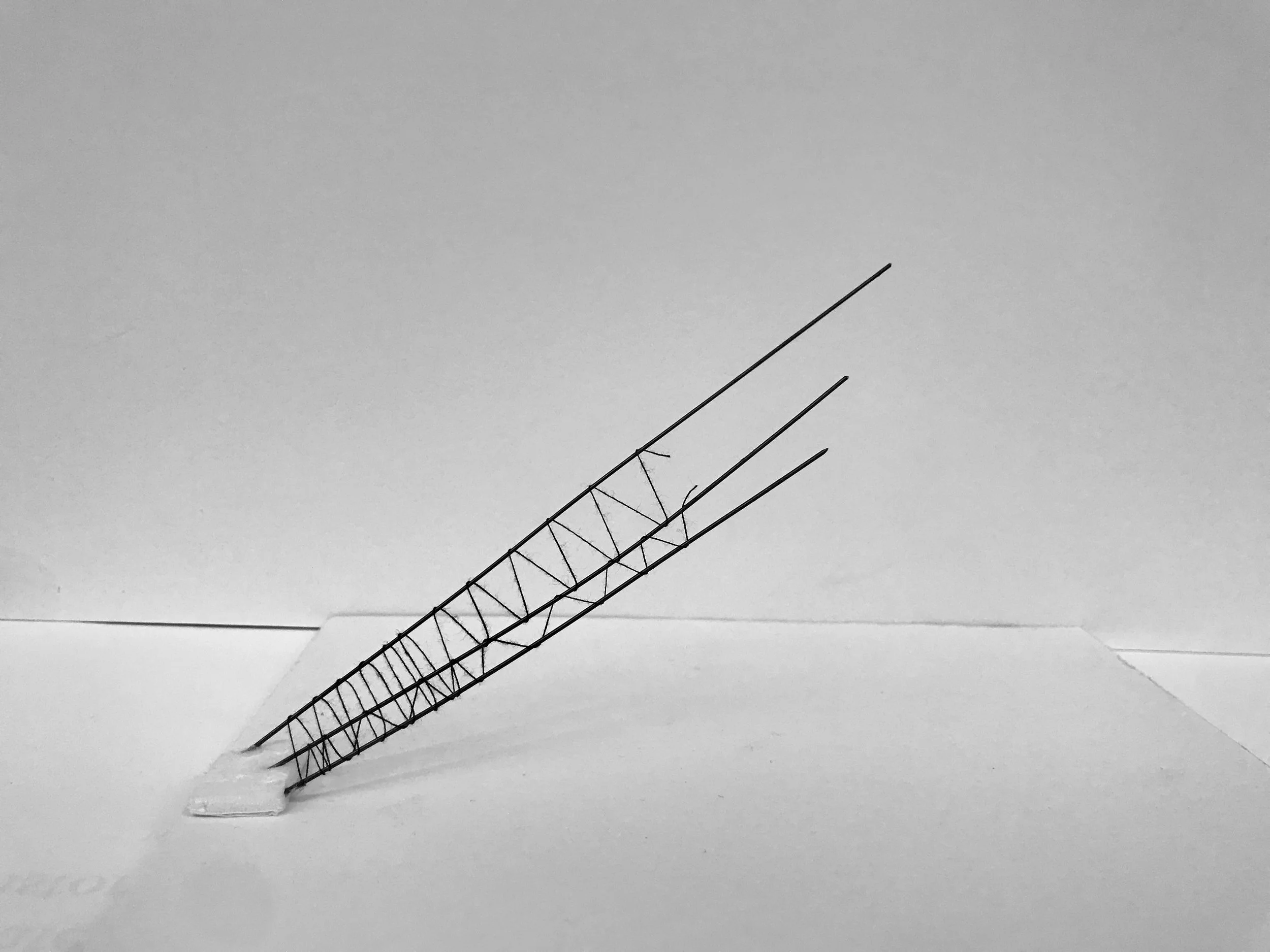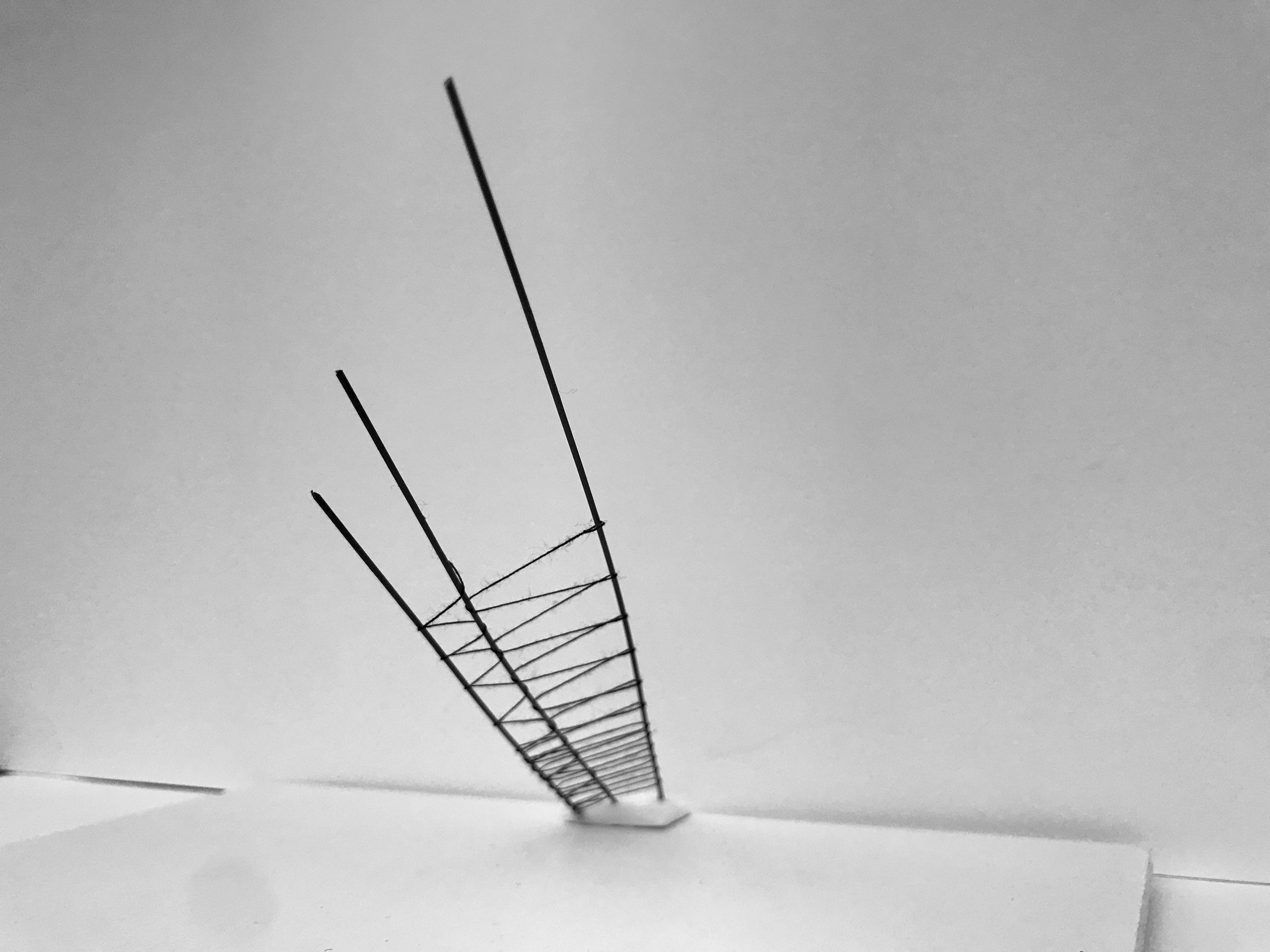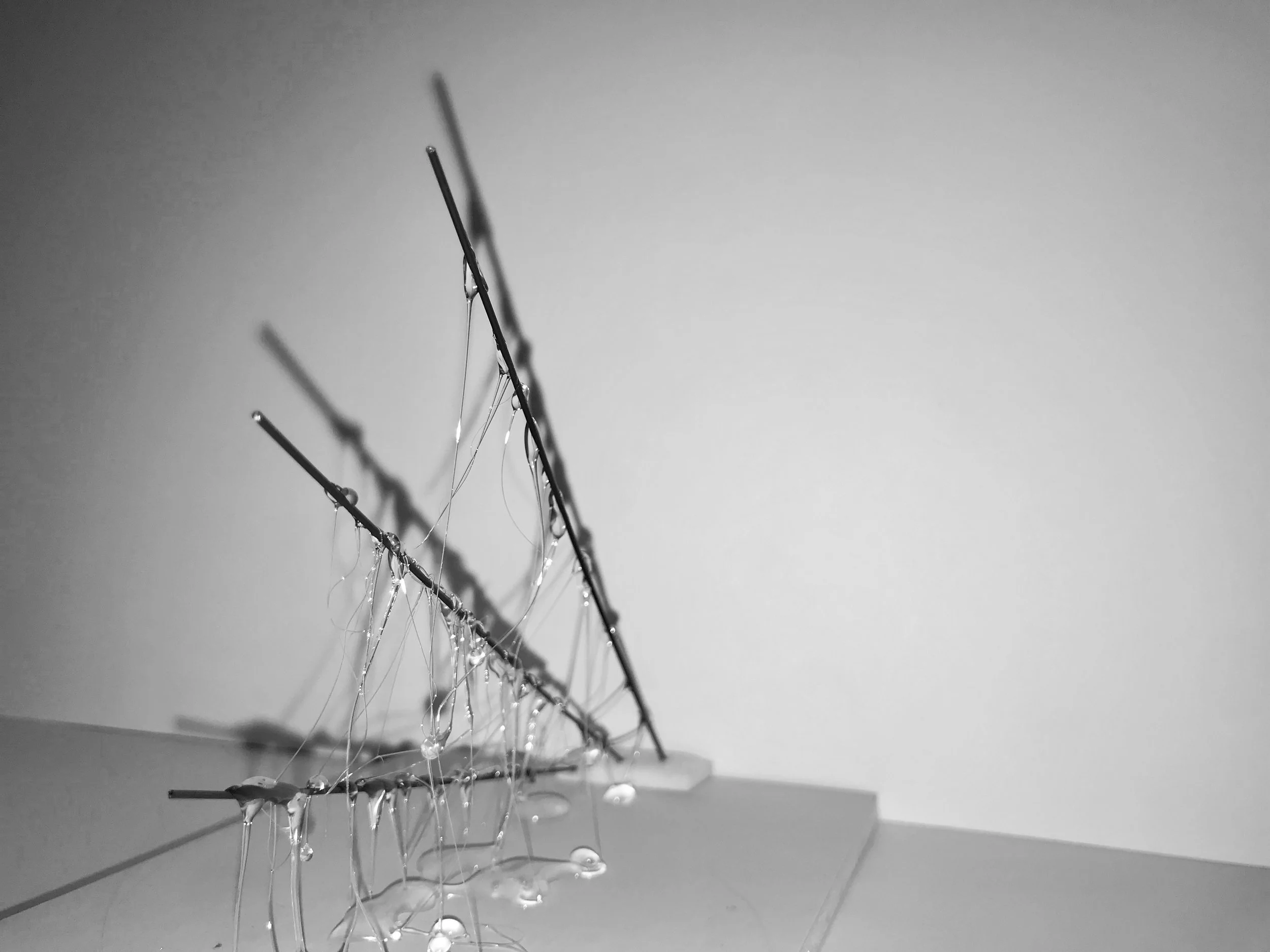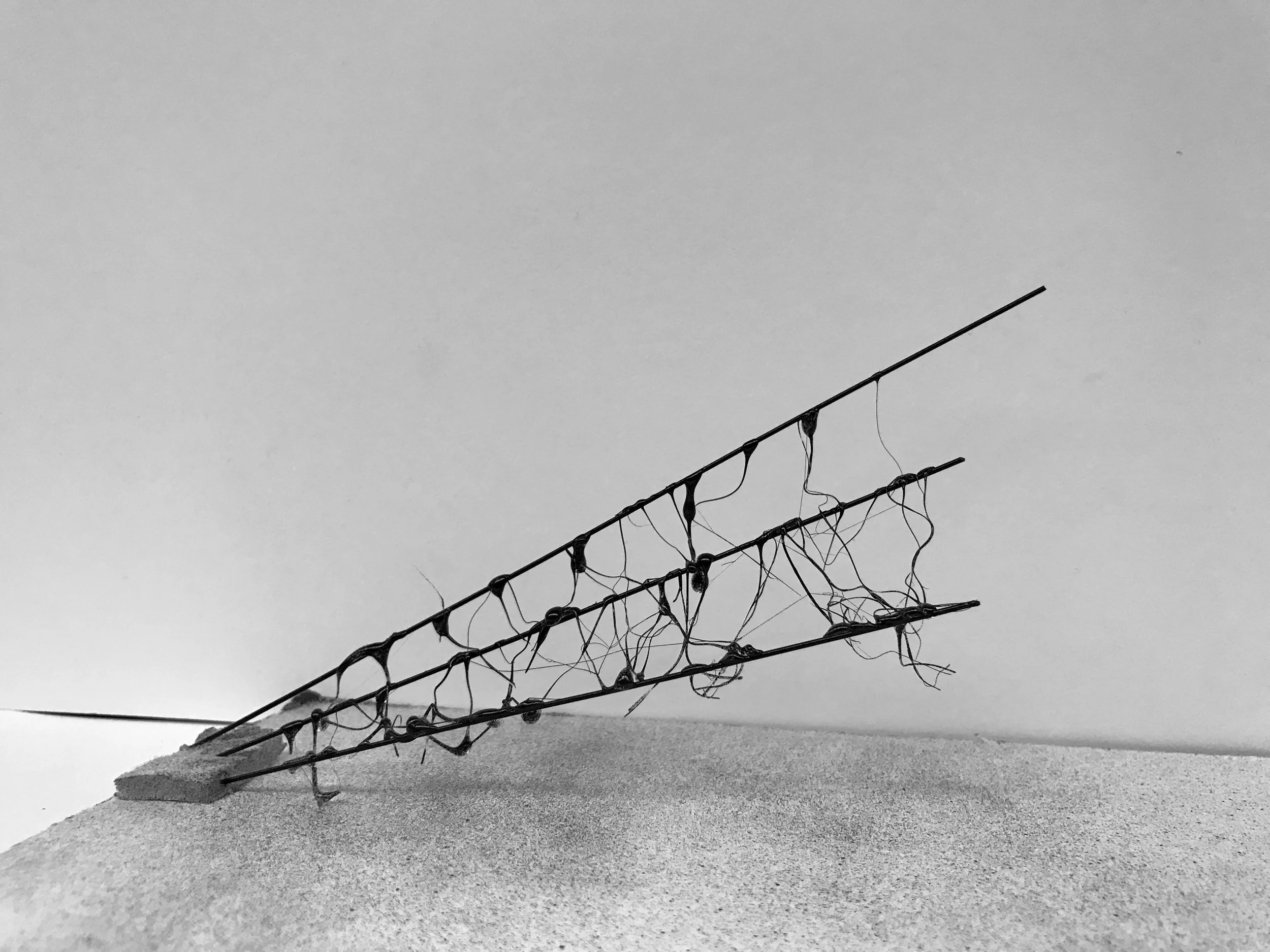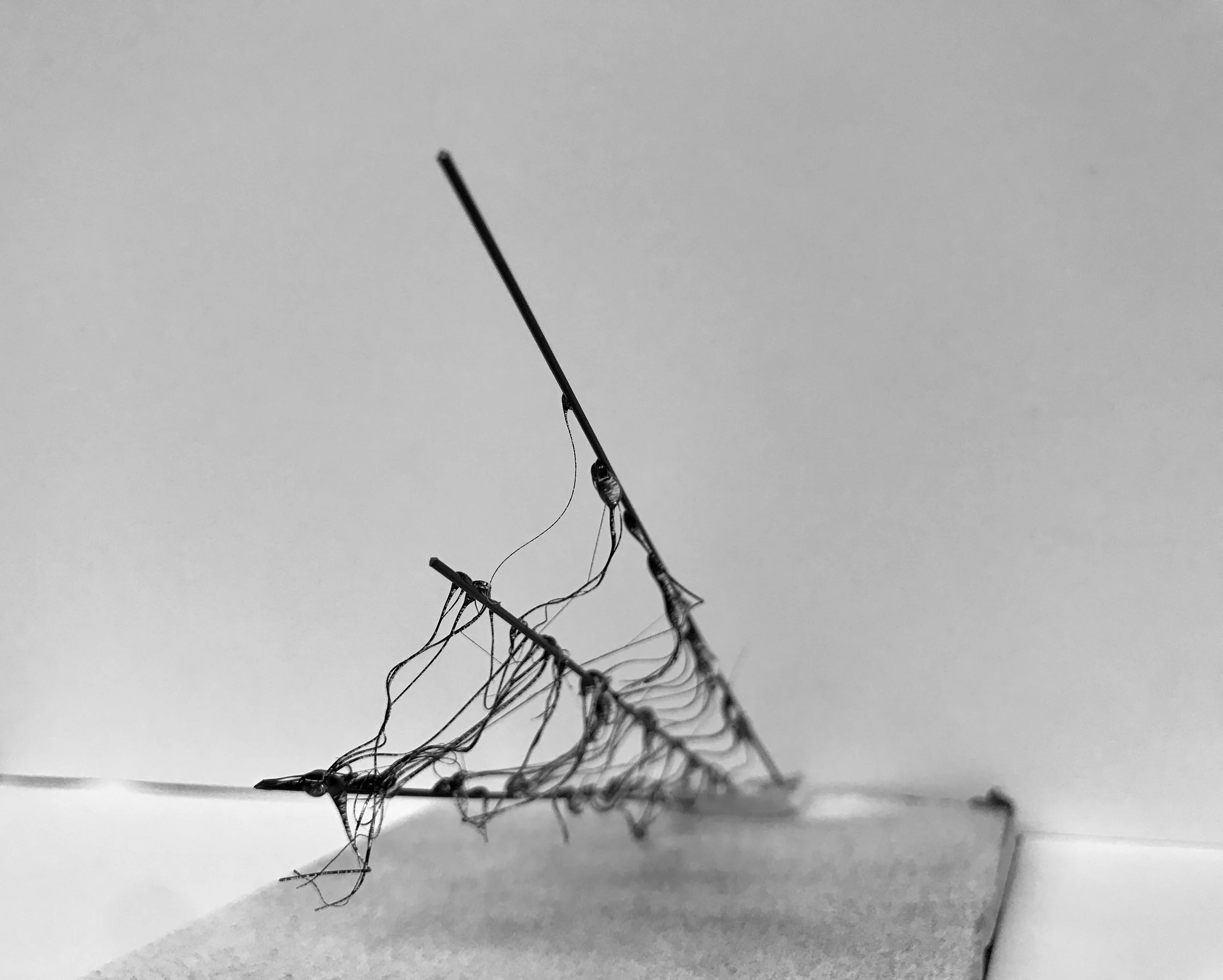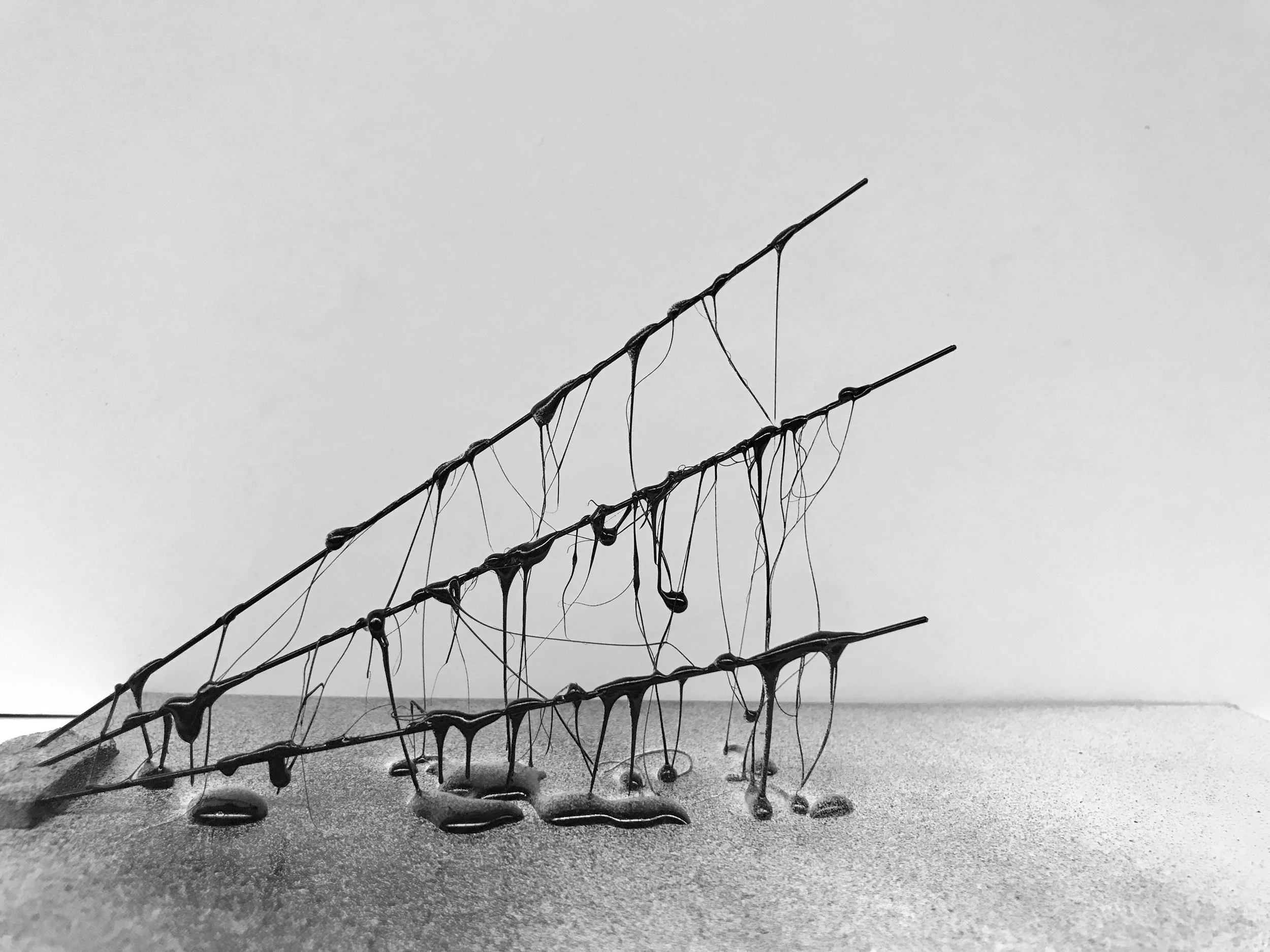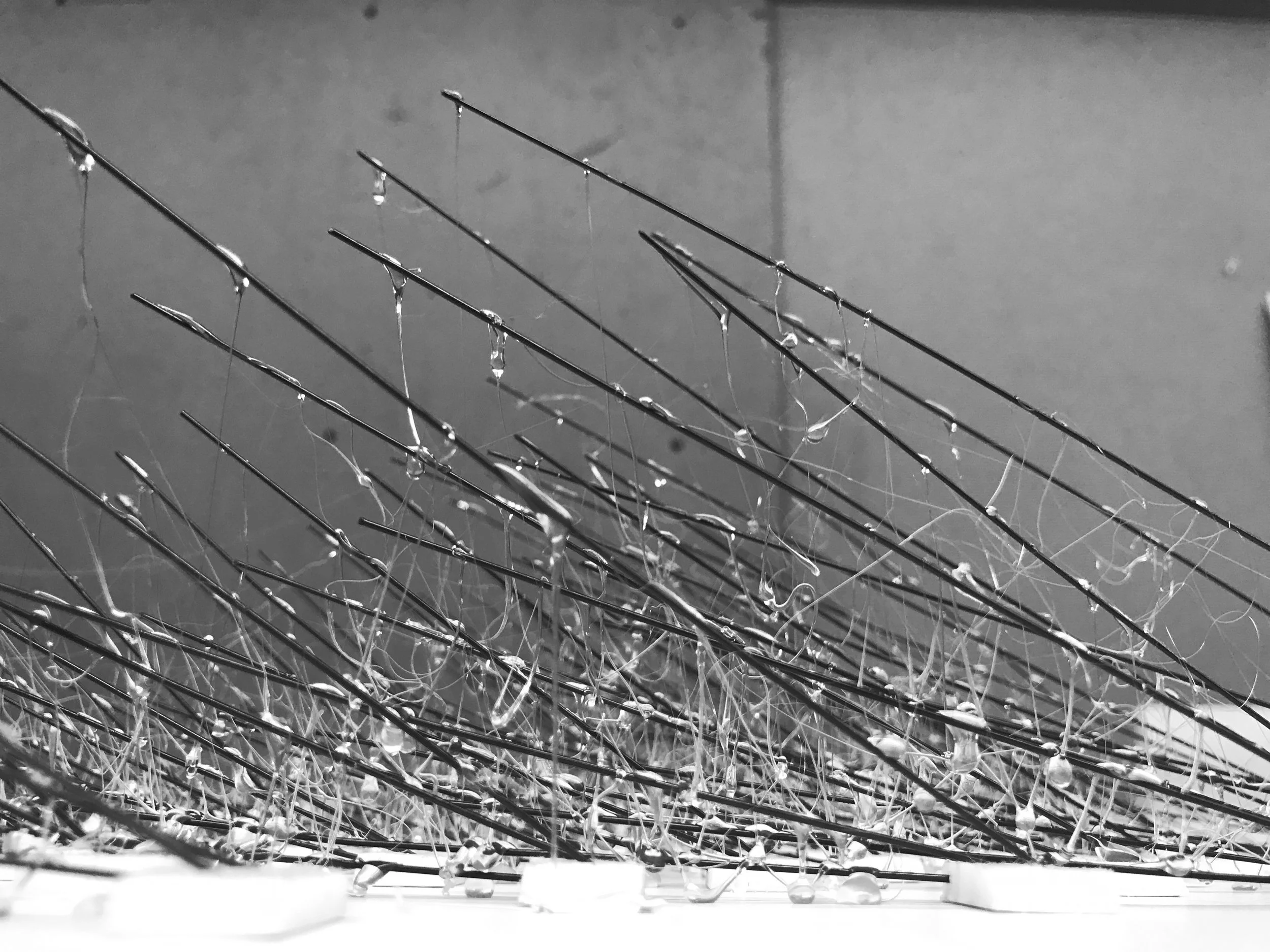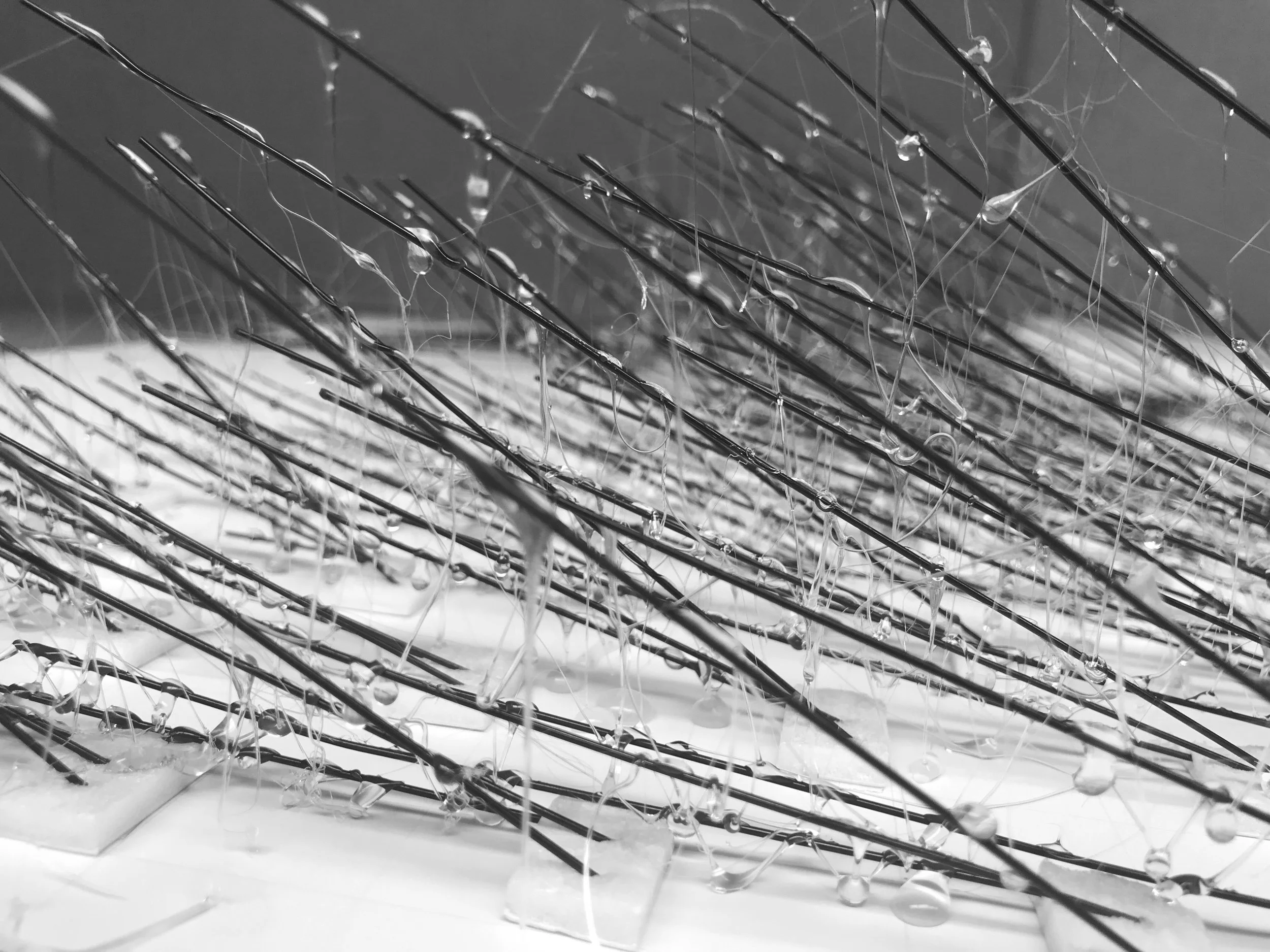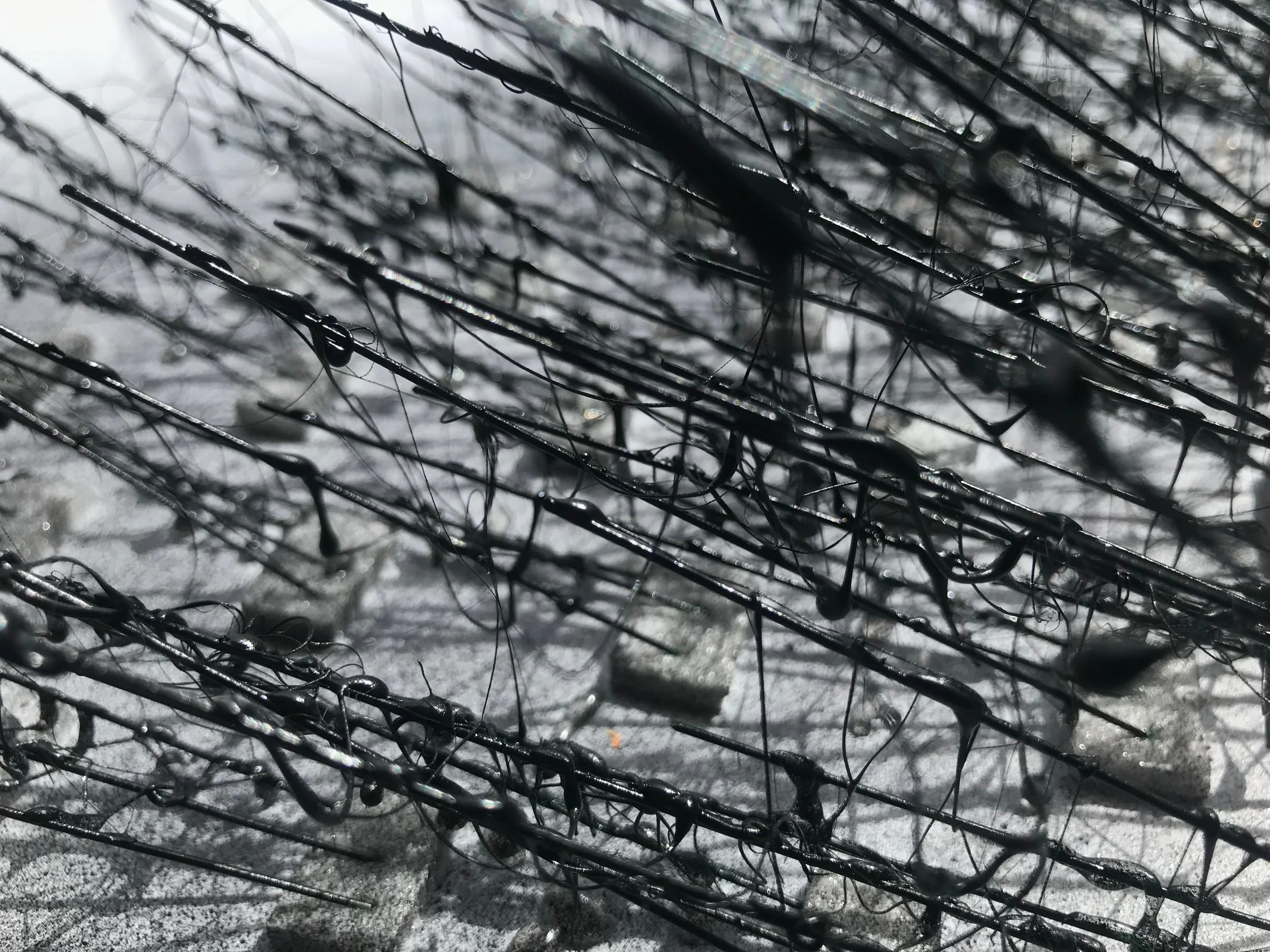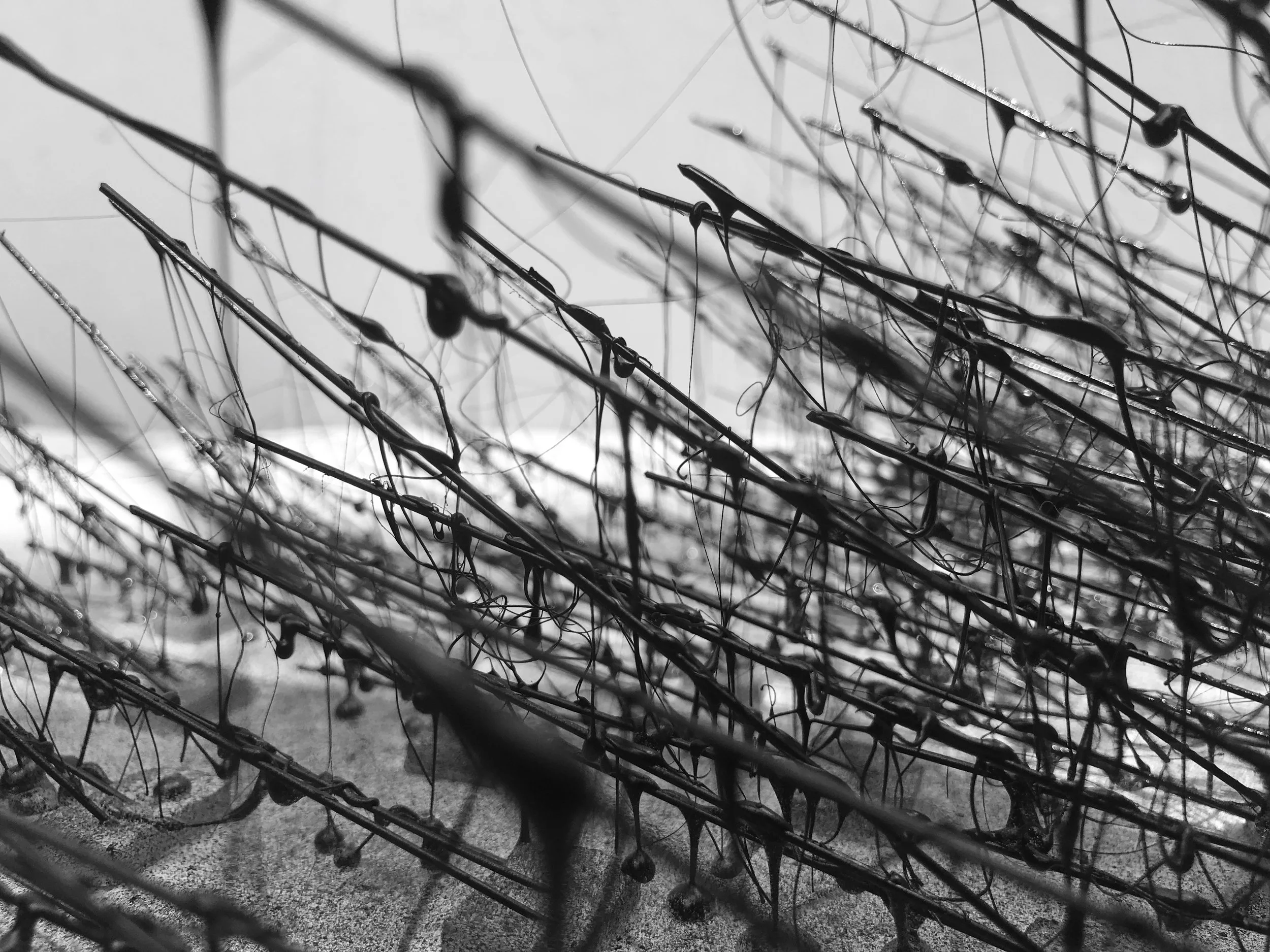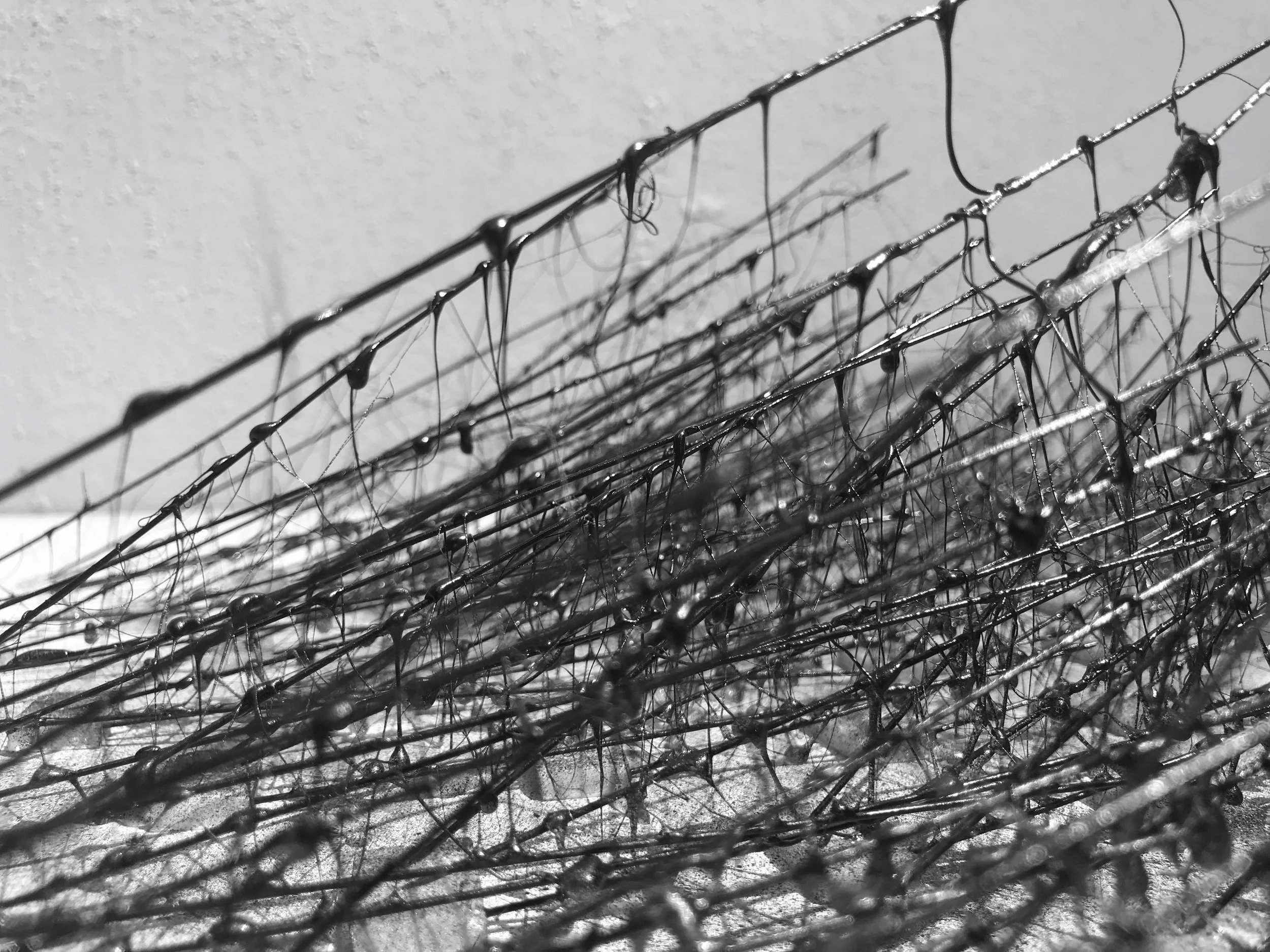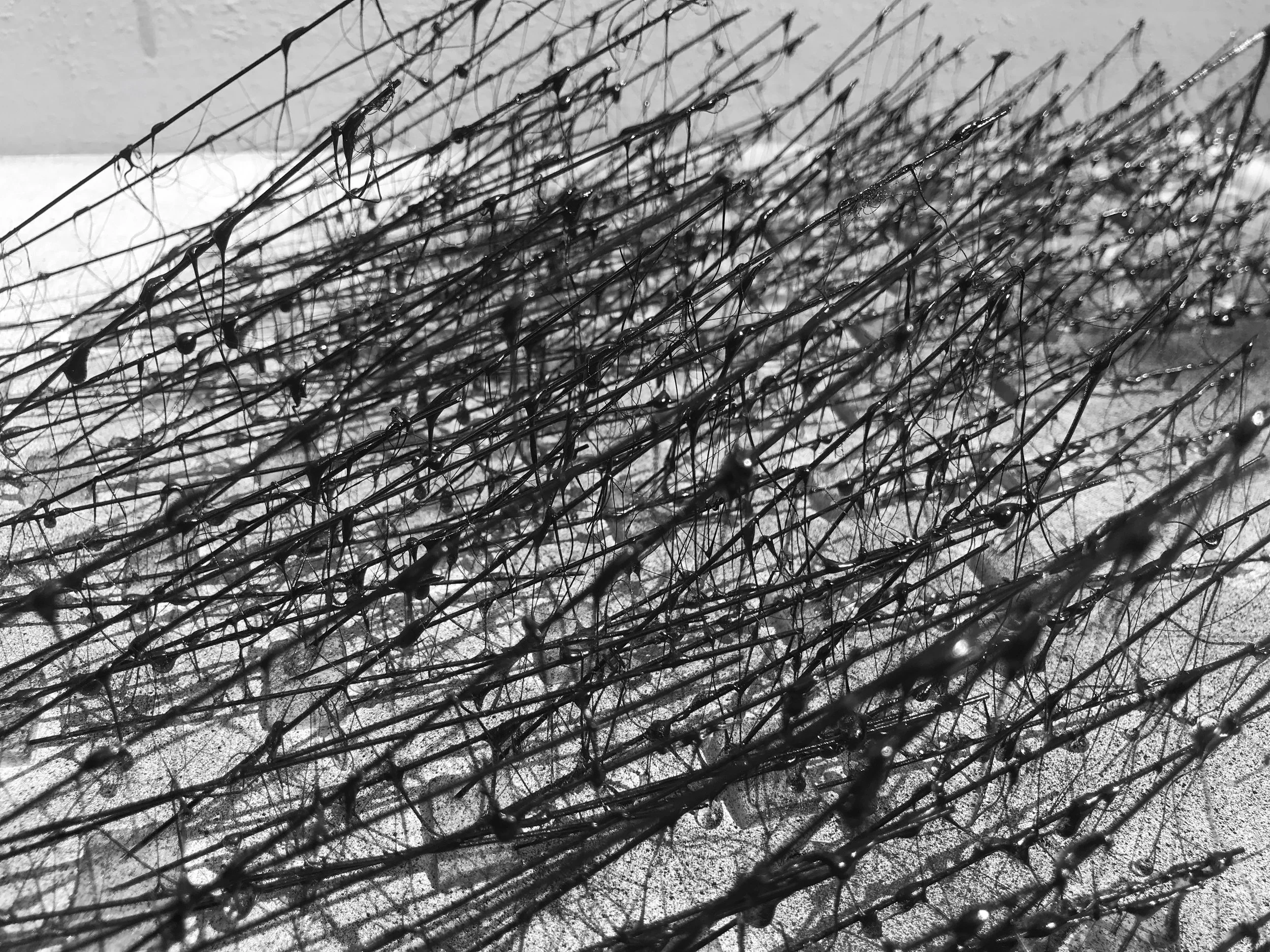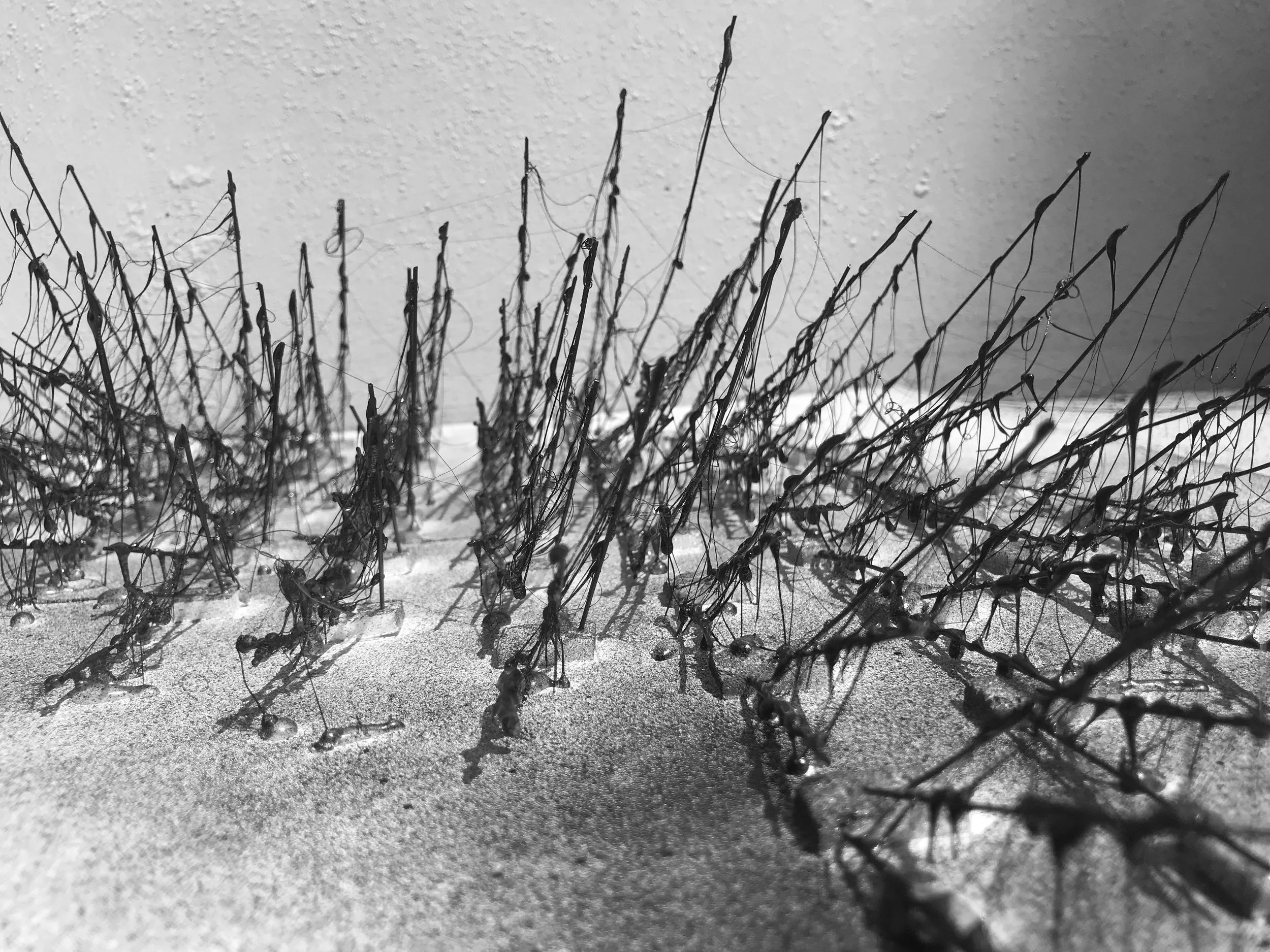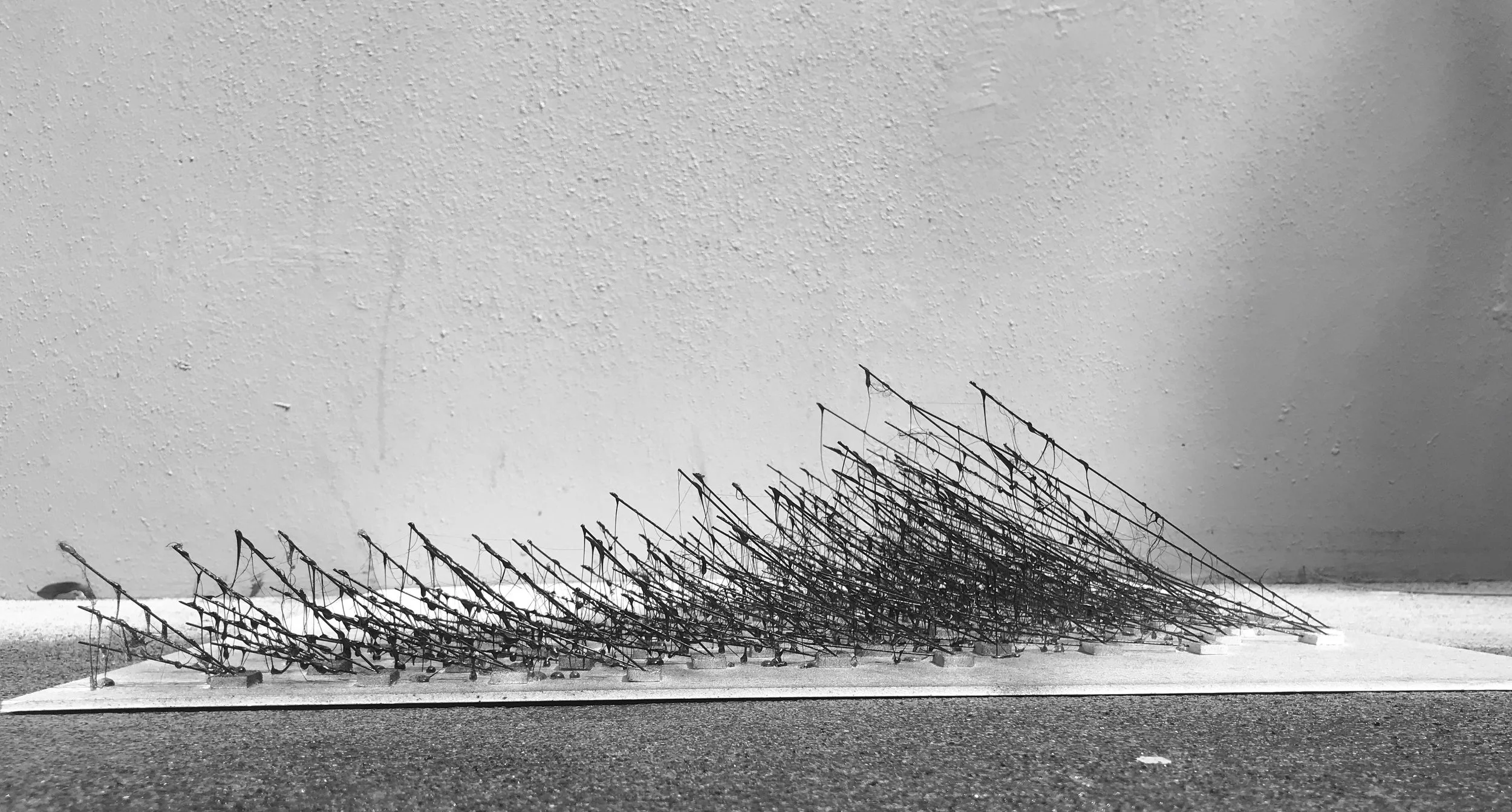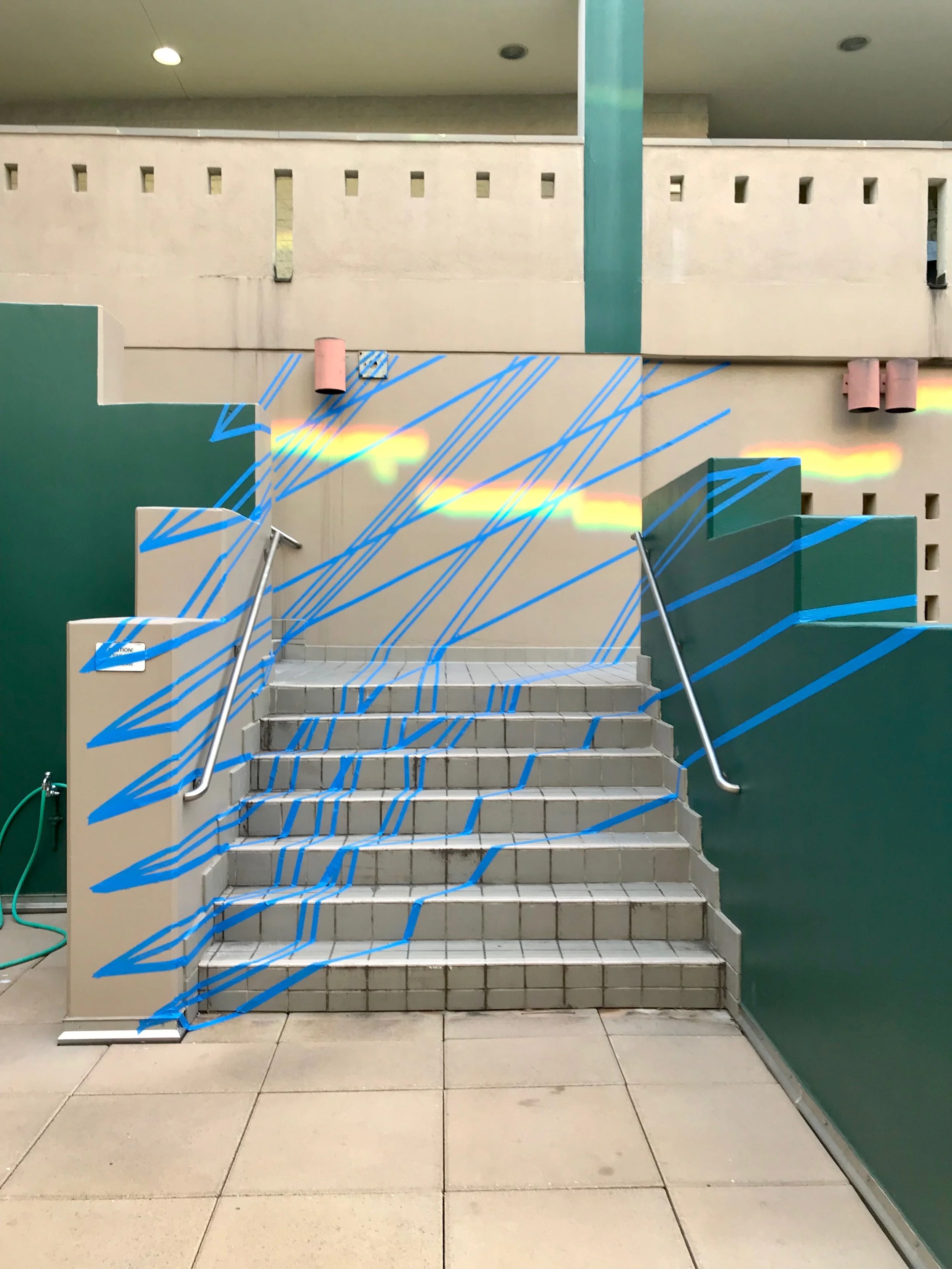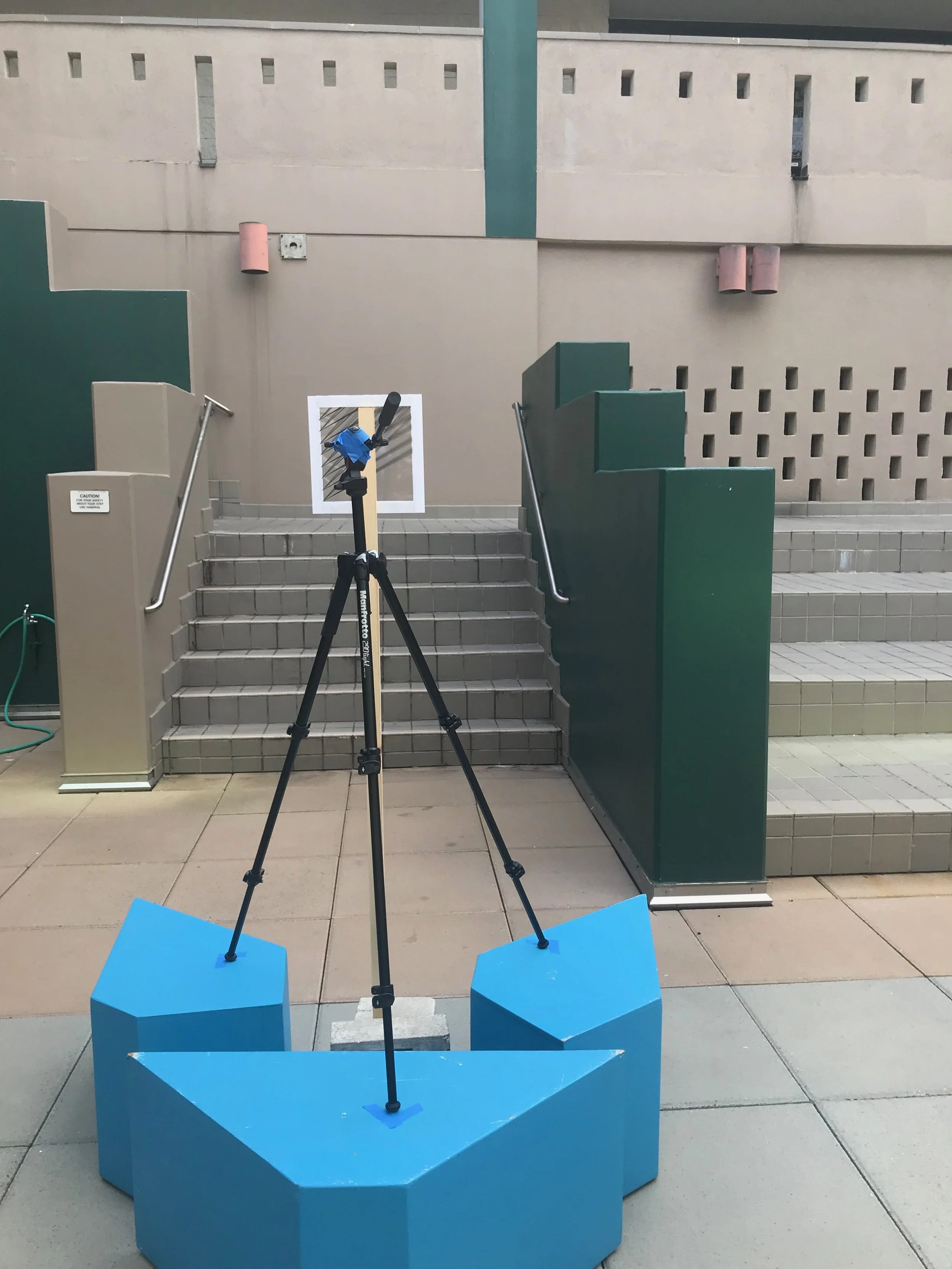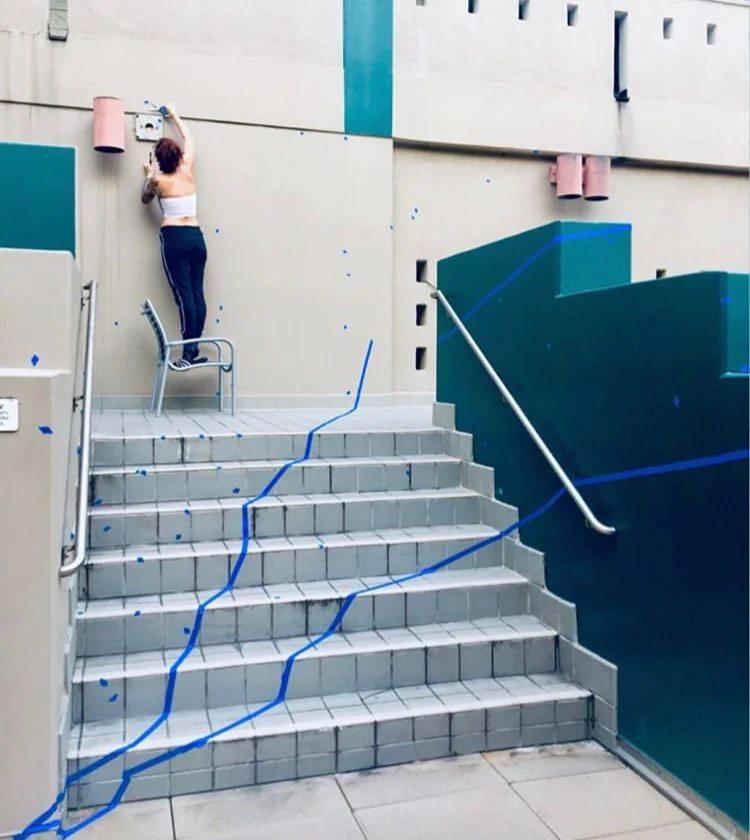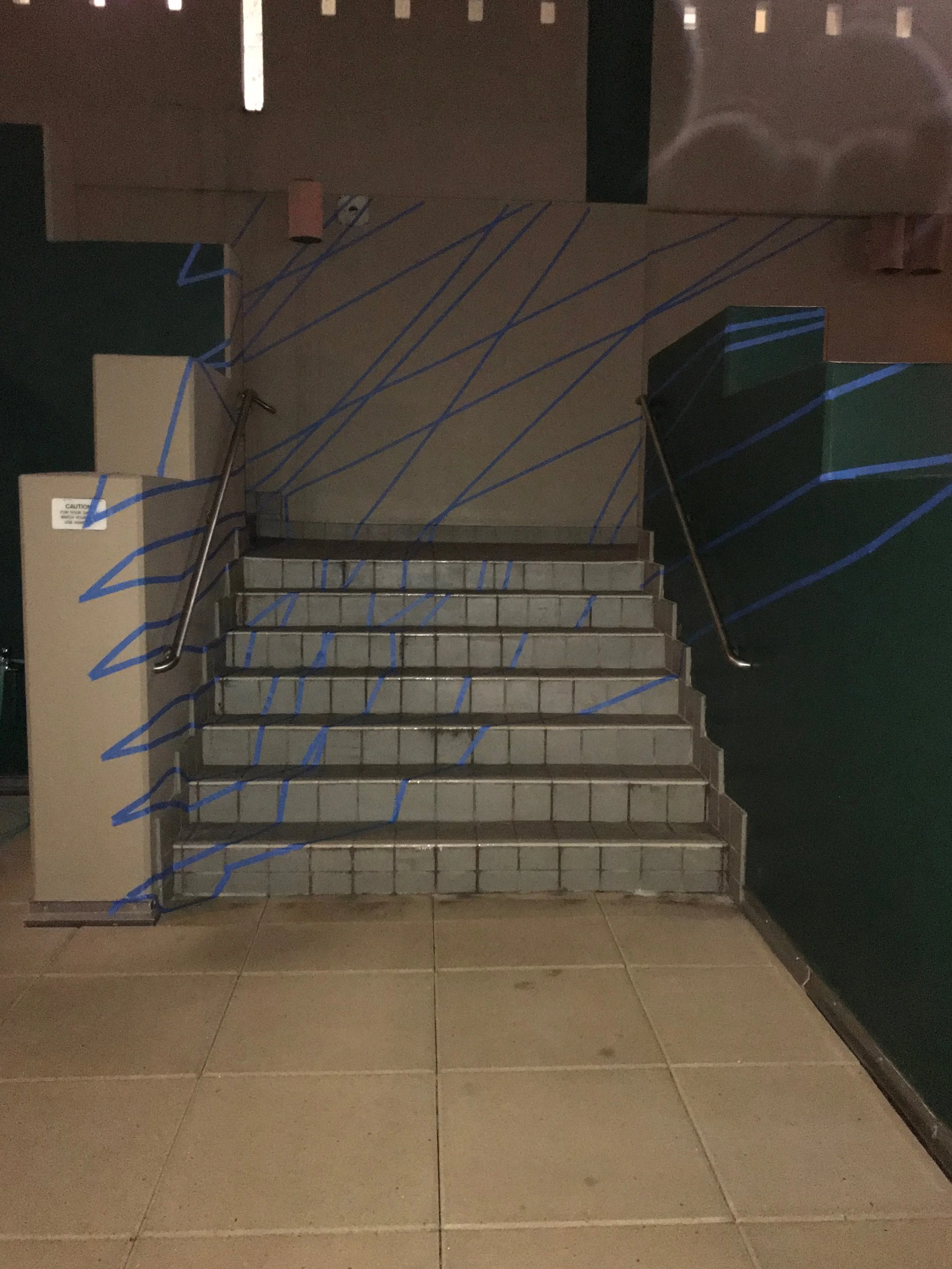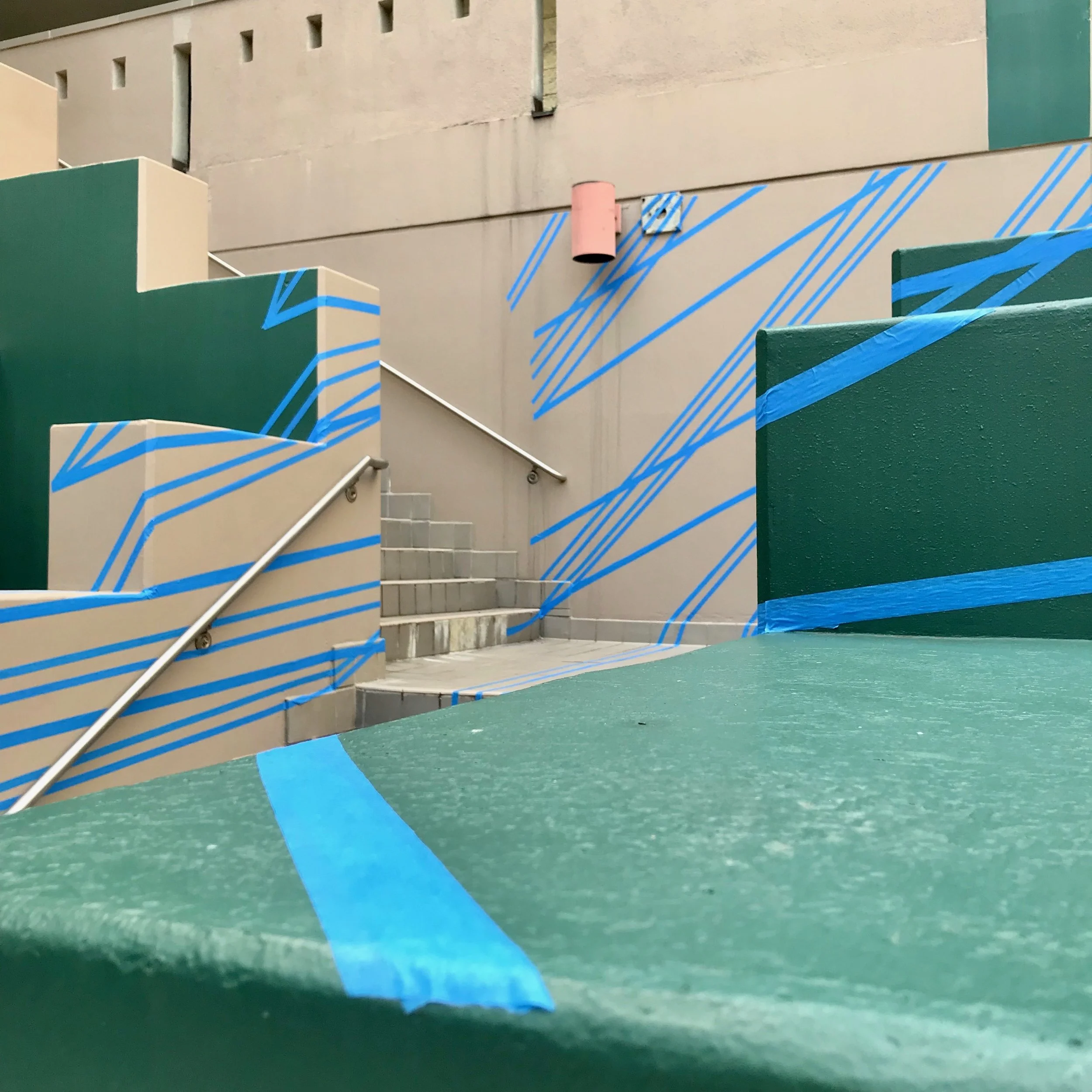How do spider webs apprehend prey?
ARCH 490: Drawing Ecologies - Professor: Simon Bussiere
The following series is a semester long study of the question “How do spider webs apprehend prey?” Through various studies and mediums, design elements abstract the key findings of the powerful and impressive spider web.
The Moment of Contact
Photos from A Currell, F Wallpapers, G Dalrymple, J Lazraz, J Zablow, L Dejong, T Buchanan, Will Cook, & Getty Images
A loose, generalized framework for spiderwebs is highlighted here in orange although spiderwebs are intricate & extremely unique based on species. This main framework holds the tension between connecting webs.
Controlled chaos
Although spiderwebs appear to be delicate, they are intricately weaved through rhythmic patterns that allow them to be a death trap to certain prey. Beginning with a loose framework, a spider will continuously trace a pattern while spiraling inward to connect that frame by means of tension. Point of contact to the web from the unfortunate prey initiates a chaotic but controlled capture through tension from the pattern along with the trigger of an electromagnetic field.
Lofting Patterns
Commonalities
Finding natural curves at the point of contact help to understand the logistics of tension hitting a spiderweb.
Replicating patterns
The grid created is based on the loose framework of this specific web at the point of contact. Control points relay specific curves based on the heightened tension caused by the moth’s entrapment.
Lofting curves
Intertwined
The lofting techniques utilized in this study mimic the exaggerated connections from the basic framework to the apprehended. There are strong vertical relations to where tension spawns from and where it is held. Concentrated volumes and surfaces exhibit these points of interest.
Applying curves
The development of these patterns brings attention to underlying shapes within that can be utilized for various purposes on different scales. These shapes work from planar points as well as volumetric developments.
Tessellations
Framework
Spider webs begin with a very basic framework which holds all of the strength in the center which is later cleaned up.
Electromagnetic forces
Spider’s silk hold electrically conductive glue which entraps their prey with initial contact.
Web Projection
Spider webs begin with a projection from their position to hopefully, another object.
The inspiration
“Silk secreting systems of spiders and insects are homologous and linked to the crursal gland and cuticular secretions. Systematic studies of natural spinning process of spider silk have shown a marvelous process of filament making from the delicate glands at very low temperature, using water as solvents.” -D. Saravanan
The process
The Outcome
While finding patterns that convey the complexity of spiderwebs, it was found that their most eminent properties are electromagnetism, a strong framework, and a strong starting point. The elements while reviewed separately can seem simple but when combined, they offer one of the strongest predator traps in regard to their scale. A model that displays all of these elements in an abstract way, offers mysterious views from all around, encouraging the mind to continue exploring as one glance is never the same.
Dioramic Space
“IN ANY CASE, INSIDE AND OUTSIDE, AS EXPERIENCED BY THE IMAGINATION, CAN NO LONGER BE TAKEN IN THEIR SIMPLE RECIPROCITY; CONSEQUENTLY, BY OMITTING GEOMETRICAL REFERENCES WHEN WE SPEAK OF THE FIRST EXPRESSION OF BEING, BY CHOOSING MORE CONCRETE, MORE PHENOMENOLOGICALLY EXACT INCEPTIONS, WE SHALL COME TO REALIZE THAT THE DIALECTS OF INSIDE AND OUTSIDE MULTIPLY WITH COUNTLESS DIVERSIFIED NUANCES” -GASTON BACHELARD
The process
“ ‘Dioramic modes’ generate critical operations that expand beyond the view-oriented practices of traditional dioramic representation to introduce an impermanent, analog, three-dimensional construction and tactile manipulation of materials into spatial and environmental extent” (Clark & Schneider).
The Outcome
Dioramic Space is an example of vision altering perspective which can be used as one of the many metaphors of perception affecting life. This project showcases various sources of interest, therefore, allowing no “right” way to view it even with the designated perspective from which it was installed.
Despite being in an open area, this installation creates a sense of space and enclosure without creating solid surfaces. There are definite beginnings and endings but a contiguous pattern within the space. A space image is presented allowing one’s mind to understand that they are physically present in a definitive space.
Works Cited:
Saravanan, D. “Spider Silk - Structure, Properties, and Spinning.” Spider Silk - Structure, Properties, and Spinning, 2006, wet.kuleuven.be/wetenschapinbreedbeeld/lesmateriaal_biologie/saravanan.pdf.








